
My GREATEST THANKSGIVING STORY


I have been in court a lot, military, state and federal, helping prosecutors win cases I brought forth, for three decades. I even worked for defense attorneys in the subsequent years as a private investigator. This process was an incredible legal education. I came to believe that the best patrol officers are former detectives. The best detectives are former prosecutors. The best prosecutors are former judges (especially appellate). Of course, this reverse engineering ladder of sorts, this learning curve is impossible to officially implement.
But, I feel lucky to at least have worked in these worlds. Back then, District Attorney Jerry Cobb and his top assistants were better than most investigation schools on what details gets convictions. (Two such great and dedicated staff minds were Alan Levy and Lee Gabriel.)
(Me atop the Denton County, Texas Court House, circa 1980s. In the distance is the original courthouse on the classic downtown square. )
The law makes you think about all things big and small. The who, what, where, when, how and why. A police officer asks those questions for the crime report. The detective digs deeper. In the grand jury and trial stage we must dig even deep – deeper because you never what what tiny problem might arise in court.
Law school should export critical thinkers. All lawyers should be critical thinkers. They are often not. But they should be. I know lawyers who are doffusses and some think like criminals.
Juries and Jurors: And Lord knows common jurors… your wonderful peers… have no training in critical thinking. It’s the pot luck, roulette wheel of your freedom and fortune.
When I was an investigator in the US Army and in those court martials, the juries consisted of officers, usually college grads. No guarantee of critical thinking, but on paper at least they appear probably smarter than civilian “Joe-Shit-The-Rag-Man,” juror, often was-is someone who was never taught civics in school, the law or government or unbiased history. Often was-is someone that when questioned think Abe Lincoln was the first president. Often someone who failed to avoid jury duty and sometimes even fall asleep in the jury box. (Oh yes, I could tell you stories – well, I have, in my book below, actually. Judges are supposed to “wake up” jurors. Naps never happens in military tribunals. Oh no. And in federal court the judges are VERY powerful and sleepers are awakened by “thunderbolts” from the bench. But in state and county courts, not always. To counter the snoozers, I would sometimes fake a loud sneeze into the microphone when testifying and coming to a vital speech point. I would watch the nappers’ heads bolt up. I would wait a few seconds for them to come to their senses. Everyone in the court knew what I was doing, but it was a Oscar-level, sneeze performance with which I could contest any objections.)
One of the many things I learned that for the colonel, the scientist or the carpet-layer to totally draw conclusions, they need to hear and analyze total evidence. Thus…the “Total Evidence theory.”
“There’s a crucial principle in probabilistic reasoning known as the ‘total evidence requirement’. This is roughly the principle that we should always use the most specific evidence available to us. Suppose the prosecution tells the jury that the accused always carries a knife around with him, neglecting to add that the knife in question is a butter knife. The prosecution has not lied to the jury, but it has misled them by giving them generic information – that the accused carries a knife – when it could have given them more specific information – that the accused carries a butter knife. In other words, the prosecution has violated the total evidence requirement.” – Phillip Goff is professor in philosophy at Durham University, UK. Writing in Aeon Magazine
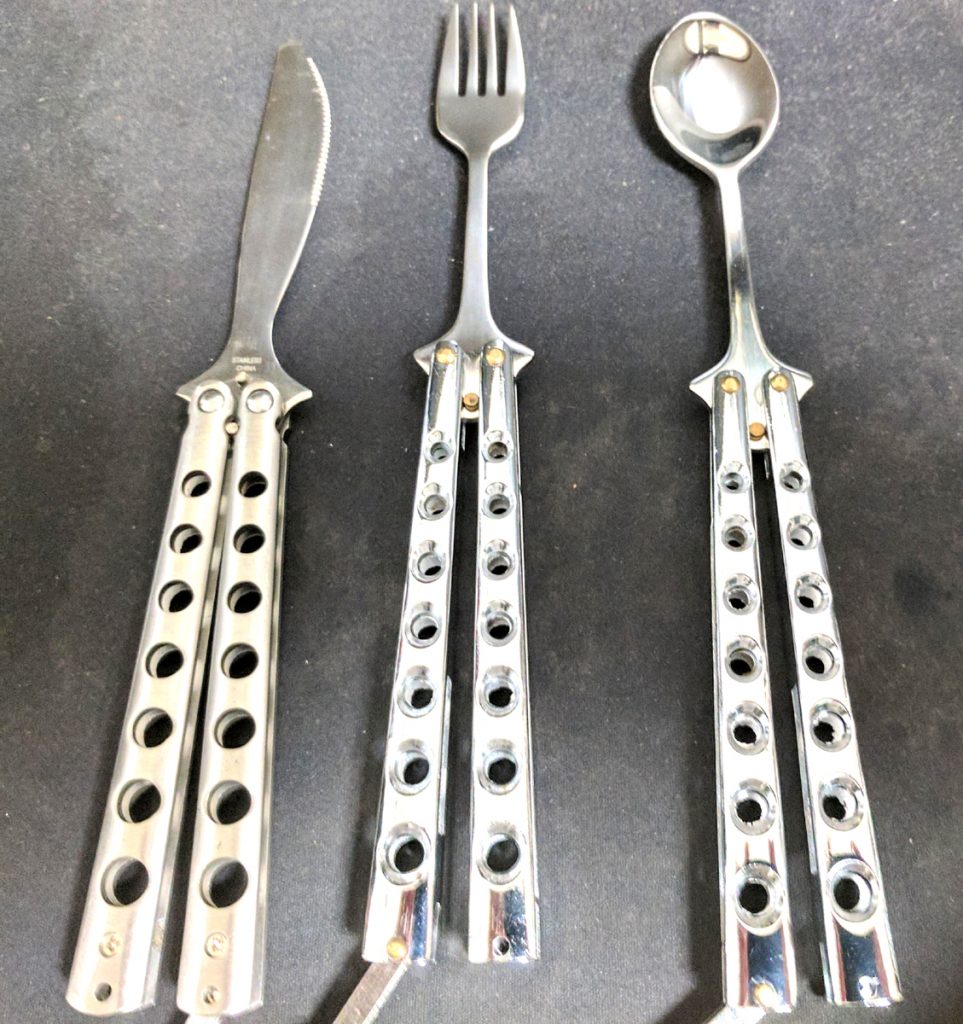
(My book covers much police action and many issues like this. The title was invented by the publisher and not my choice. When you sell a book, titular things like this are out of your control. Ebook or paperback. Click here. )
Kajukenbo Okayama: Hoch, tell us about yourself.
Hock Hochheim: Well, that’s sort of the “Who, when, what, where, why” that I use everywhere. And I do ask that question…“Who?” “Who are you, really?” And in our business, who do you really expect to fight? There’s a psychology where older people think less of themselves, and then younger people think more of themselves, in terms of what they think they can do, and who they can fight and win against. This is so true that there are actual psychological terms for both of those categories, but they escape me now. I have to continually look them up every couple of years to remind myself.
But I’m just a former army, military, police investigator. Then Texas police, and in most of that time, in those 23 years, a detective, about 16 or 17 years of that. And since 1972, starting out at Ed Parker Kenpo-Karate, I’ve been a martial artist, other than a few rare years maybe, while in the army. I’ve just done this every day for…I think the number now is pretty much 50 years, 51 years… Fifty years, fifty-one years of thinking about/worrying about/being psychologically obsessed with these elements of fighting. To a fault, I think. I think it’s a bit of a mental sickness.
KO: (Laughing)
HH: I should be thinking about other things. Which I do, yes. I think about writing my novels, but also my mind wanders back to organizing this martial material…what’s better, what we can cut out, what we absolutely need. And in the terms of hand, stick, knife, gun, war and crime, it’s quite a challenge. It’s still a daily challenge, after all these years.
KO: Tell us more about your martial arts history.
HH: I was in Kenpo-Karate, I guess about a year, and then I went to the army. So, I had this established impression of martial arts. In the army, there was just a couple opportunities to train. Boxing. Police Judo. First of all, I was in Korea, and I wasted my time there, martial arts speaking. I say I wasted my martial arts time there because…I hate to use the word “brainwashed”…but I was so immersed in the idealism of parker Kenpo, and how superior it was, as they told us, that I really did not want do anything else. Now, I should have done Hapkido at least while I was in Korea. I’m not really a big fan of Tae Kwon Do, I like their power kicks, but gosh, I could have done Hapkido! We had opportunities. There were a couple ROK Marines there teaching military combatives classes at another base gym, So I did that.
The military police academy was kind of big on boxing as a support system, which also had its inherent problems. But since I was in Karate, as soon as I got there, I did their boxing stuff. And it’s very hard to take sports boxing with gloves and transform it into bareknuckle fighting and reality arrests. There’re real problems with trying to make those two come together.
And so, anyway, then I got out of the Army, I did Karate and Jiu-jitsu back in Texas…the stand-up, old school Jiu-jitsu. And then, in 1986, I started in with the Jeet Kune Do people. And that was just a big mind explosion. I was very happy to get out of the classical framework, as suggested by Bruce Lee.
So, we’re talking Dan Inosanto and his top instructors. Thai boxing, the Filipino martial arts, Jeet Kune Do, Wing Chun…all the things that they were doing was just a massive amount of cool investigative stuff. And that went on, probably, I guess, until about 1997. Oh, and then of course I picked up with Ernesto and Remy Presas. And that was a huge chunk of time. I got very close to both brothers. They often stayed at my house, which was a fantastic opportunity for me.
I lived in middle of the country, and they needed to stay weekdays somewhere between their weekend seminars, and I was a bachelor, and they just flat out asked me: “Hock, can I stay, you know, Tuesday through Thursday?” Or, “Monday through Friday morning?”
Then about ’97 I really decided to get free of everything, and clear my head, and create exactly what I dreamed of. Y’know, all these decades, I was in the pursuit of the “perfect martial art,” so to speak. Survival fighting with hand, stick, knife and gun in crime and war, standing through the ground. And after I’d done all of these things, I realized there was none. No one perfect thing.
And so I decided to embark on this blend…I guess the best word is “combatives.” A word that wasn’t popular in the ’90s, but I picked that word anyway. It became popular later, to a shaky extent.
KO: Before you got into Jeet Kune Do, I hear you had a run in with Kajukenbo?
HH: Yeah. So, in Ed Parker Kenpo Karate, North Central Texas…which was one of the rarest of official martial arts schools you’re gonna find back in the late 1960s and early 70s. I found one and joined. We had two private lessons a week, and Saturdays was set aside for a group lesson. A couple of hours, and that was your typical group martial arts class in many ways. And at the end of the Saturday session, they had organized…Keith See was the guy, one of the first generation Parker guys…they had organized a sort of open, sparring class with as many other schools as you could find at the time. There was Tae Kwon Do, there was Kung Fu, there were various arts. And since part of Parker Kenpo was very kickboxing oriented, we usually sort of “won-beat” everything against these other people.
It just created a “wow” factor, like some of these folks were really dramatically moving into artsy, unsafe positions (as taught by their arts), and we’re just kickboxing at this point. Not good for them. We were always very friendly. There weren’t any kind of feud problems.
But then all of a sudden, who shows up one of these Saturdays in 1972, but the local, Kajukenbo guys. And all of a sudden, they were like us. They were a mixed kickboxing outfit. And so “Wow!” we said. And so no, we did not overcome them. And y’know, it was very much an equal experience. “These guys are like us! They’re from Hawaii, they’re doing the same things…” So that was my first introduction to Kajukenbo, and these guys. And, as time marches on, we’re all going to seminars, and we get to know each other and stuff. And then of course a long time ago, early 1990s I met Dean Goldade, he was a Professor Gaylord black belt. We worked consistently together for decades. I also got close with another Prof Gaylord guy, great guy, Ron Esteller. I have done dozens of seminars at his place over the years. I’ve done a seminar with Prof. Gaylord in California, so I know all these guys, and it’s just been a gigantic friendship ever since.
KO: What was it like in the martial arts world when you first started?
HH: Those guys were super tough. I joined…I started, in 1972, just after the blood and guts era of Karate training. It was sort of an assumption that this old martial arts training style could not be a successful business, if you have to vomit or bleed every Tuesday 
I saw the same thing happen to Thai boxing. In, oh I guess about, the late ’80s or early ’90s, where suddenly you were not beating the snot out of each other all the time in class. Before that there were just constant injuries, and business problems with that. And of course Bruce Lee had this same problem at his YMCA classes in Los Angeles, which is why he created that YMCA boxing program, which Tim Tackett taught me. There’s a lot of great, hardcore, application drills in that program. It meant that James Coburn didn’t have a black eye when he went to the movie set. And the doctors and the lawyers training with Bruce, y’know, weren’t all busted up.
So, he created this kind of program that was focus-mitt oriented…and you’ve seen bits and pieces of it in the Jeet Kune Do world through time. The little sets of things, strike/counter-strike, sets of three, sets of four…I still use those. But my mission is not to create a boxer or a kickboxer. My mission is to create a bare-knuckle, self-defense endeavor. So, I still use a lot of that Bruce Lee YMCA program.
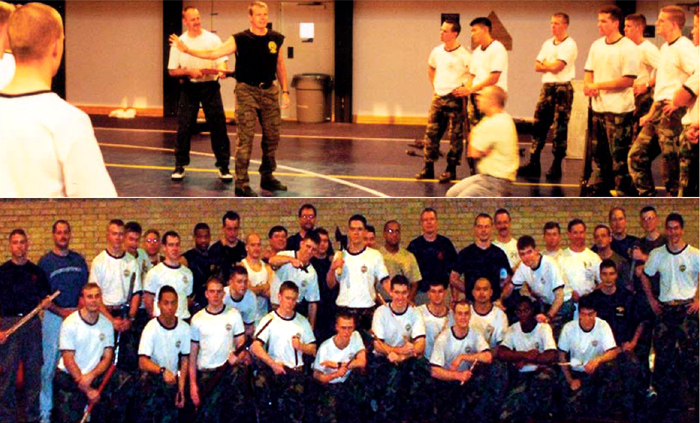
KO: Tell us more about that program.
HH: Well, everything is called “Force Necessary”. It’s based on using only that force necessary to win and survive. The definition of “winning” is different situationally and personally. I have a couple of rules about what a fight is. “Checkers, not chess” is a motto of ours, and defining what you don’t do, helps you define what you do do. Defining what you don’t wanna’ do helps you define what you wanna’ do.
Is a fight “chess” or is it “checkers”? I believe a real fight under stress is checkers for almost all people. I mean, look at the limited list of techniques you see in the UFC. So I have an internal meter in my head that can spot the chess applications. Einstein said, “Keep it simple but not too simple.” But the definition of simplicity changes with people. So, if you have a super talented martial artist, you should remember that their definition of simple, or “checkers,” is higher than the average person.
Trying to keep things simple and as realistic as possible, in the hand, stick, knife, gun realm, that is really core, essential stuff.
I am not going to create champion kickboxers. Or champion MMA people. Or champion BJJ people. And in actuality, a lot of those people that do advertise they create those champions…they don’t really create champions anyway. Y’know, they just have a program, and they do the best they can with it.
My goal is to create self defense people. And again, there’s of course that large middle realm of “normal” people. But then of course if you have a special athlete in there, you have to make sure you hit their level of simplicity, which is higher.
I can look at people and just decide what they need to work on. For example, here’s one example, I’ve tried to look into the subject matter of the density and size of fists. You can look at a person and say “You shouldn’t be punching people, because look at how tiny your fists are. Switch to palm strikes.” And then I have another friend who’s got fists like cinder blocks. And he needs to be punching everybody.
I just ran across this in Hungary last week, in Budapest. A kid wants to pursue all this information. And I can look at him and say “You need to take a couple studies of, like, how Bruce Lee moved. Because you’re small, you’re thin…ya’ know, you look like him. What’s your arm length?” Etc. “But you, Mr. Tank standing next to the kid, at 280 pounds, you should develop your own “bruiser” approach to this.
I can tell you many great stories. I mean, Dan Inosanto said in a seminar once, decades ago…and he was a high school football running back champion…he was getting the ball, and crashing into the line…and his coach said “Dan, why are you running into people all the time?”
So, he named somebody famous, but it was a giant running back…and Dan said “Well, I’m trying to be like my hero ‘Joe Blow’ (whatever his name was). And the coach says “Dan, Joe Blow is 6’4. You’re 5’ 7”. Pick…another…hero.”
And that’s a great piece of advice for people, so I try to keep everything in this system essentially “core” simple, and in the end it’s up to me and the people to make their own thing that works for them. And not try to pretend to be somebody else they can’t be. It’s the “who” question again. “Who are you, really?”
And then of course you come around to the subject matter of instructors. As an instructor, despite your shape and size or shape, an instructor must know everything. Because he or she is now in front of all shapes and sizes, and ages, and strengths. So there’s the question, is your guy, the attendee, someone who wants to defend themselves, or do they also someday want to be an instructor? Well, the instructor has to learn everything. Two-fold responsibility.
KO: Tell us more about your view on teaching punching in your system.
HH: Well, punching is cavalierly taught in martial arts without any warnings. The big problem is the “bicycle helmet” area of the head. That’s the real hand breaker. Because the jaw gives, the neck kinda’ gives, and you have some chance of surviving that without injury. But when the bad guy reflexively lowers his head…you’re aiming for the nose, you instead hit the bicycle helmet part of the skull…you’ve got a broken hand. Or say, versus a hook punch, they turn their head sideways and down, and you got the split knuckles break.
So that’s why punching is level 5 in our empty hand module, of the 9 training levels, because I think it’s taught way too cavalierly in almost all martial arts. I mean, in those schools you’re punching on day 1 and no one is telling you this could be bad for your hand and how to avoid problems. What about a palm strike instead?
I’m a puncher from day one, and my hands are not that small. And I’ve only had two real problems and one surgery, with a hairline fractured bone because of an uppercut to a jaw.
KO: How does knife/gun/stick fit into the world of martial arts?
HH: Well, I guess it doesn’t in unarmed systems. But it should. It has been connected, if you think back to the samurai. They were shooting guns at each other eventually. Because the human race, psychologically, has been built to kill from a distance. This has been proven and proven and discussed forever. Archery was the big deal way back when, and then guns. And it’s just harder, face to face close, to kill a person. Just, psychologically.
So, today, there are a lot of guns. I don’t teach marksmanship at all. I have interactive/simulated ammo shooting training. In situations. That’s all I teach.
And of course the real challenge is to shoot cold, meaning that you are suddenly attacked…at that point, what is your skill level shooting cold instead of your skill level on the fourth set-round, warmed up on the range…and they say even psychologically, preparing yourself to drive to the range…getting everything ready to go, driving there, entering the place…all results in you not being all that “cold”. All of that is starting to prep you to shoot. Warming you up. Instead of being ambushed. And being ambushed is the greatest trick of all to pull off.
So I try to have situations that are based on reality. And I have very safe, fake guns, and very safe ammo, and we are able to work through many repetitions of realistic problems. You’re not learning gun combatives unless moving, thinking people are shooting back at you. It’s just that simple.
Of course, this approach has been accepted now, by the military and policing, and some smart civilian courses. I started to do this in the 1990s, and people were hesitant about it, thinking the only solution was – “I just need to draw faster” and stuff, and now as time has marched on, anybody with any sense is exploring interactive shooting with simulated rounds.
And of course, everyone’s been fighting with some kind of impact weapon or sword, but I don’t know if these things are officially, classically, “martial arts”.
KO: How did being a police officer connect with all your training?
HH: Well, for one thing, I didn’t shoot a lot of people. Cause I could fight ’em. That was a big deal. There were circumstances where I could have easily, legally, shot somebody, and I knew I didn’t have to. And so, I didn’t. And that’s from all this training and realistic confidence. Of course, that was not popular at the police department, because it set a new standard for these other people.
I do know from the reaction of people that that was kind of a problem. I’d bring a guy in, handcuffed, that I could have shot, and some old timer would be at the police department smoking a cigarette…and he’d say “Why didn’t you just shoot that son of a bitch…?”
And I would simply say “I didn’t have to. I didn’t have to shoot him”.
So that was the biggest thing. My days, the ’70s, the ’80s, and the ’90s,…basically speaking, if you were toe-to-toe, face-to-face with a guy, and a fight really started, we would basically, legally, try to beat the shit out of them until he quit resisting. You can’t do that anymore.
Because here’s the deal…if you arrest someone and wrestle with them…which is extremely dangerous, especially on the ground…and you get them in a “submissions/tap out” hold…they’re not gonna’ tap out, because in most cases they don’t know how to tap out. But you’ve captured them. Because I’m telling you, when you let the guy go, he continues to fight. Or he runs away.
So the goal of submission wrestling in arresting people is really not good. Now, if two or three people show up…your partners…you can try to work that out…and it’s usually still an uncoordinated mess.
And I’m a big fan of catch wrestling. Because as a martialist, we must know everything about the body. And we must know every joint, which way they bend, and which way they don’t bend. It’s our responsibility to know that. That doesn’t mean I have to become a brainwashed wrestler. Judo people forget to punch. If you’re in a system that doesn’t have a complete, competent doctrine, huge chunks are out. And if you exist in that system for too long, you forget many important things.
The old school fighting ways were: you hit the guy, stun the guy, throw him down. And handcuff him. That simple formula did help me tremendously in policework.
Nowadays, it’s a whole different animal.
KO: How about the stick part of your program?
HH: I approach the knife, the gun, the stick, and the empty hand in the same way. In stick training though, if you remove the Filipino stick vs. stick fighting, there’s not a whole lot left to the stick study. A regular person is not going to be fighting with a 28 inch stick by happenstance. By happenstance, you’re standing on a street corner with a 28 inch stick, and you get into a problem with another guy who has a 28 inch stick? Not likely. At the stick versus stick part, that point the stick fighting becomes more of an art, more of a fun, abstract study, a hobby, and a martial art.
If you remove stick vs. stick fighting from the program, there’s not a whole lot of material. So, I work on that for the Force Necessary Impact Weapon: Stick course, we worry about self-defense survival. A little dueling, yes, but not at all like a Filipino course.
KO: And yet you seem to have a strong interest in the stick.
HH: Well, I started with the Inosanto world in 1986. Like so many people, Dan Inosanto changed my life. With the things that he was doing, and the people that he had. I spent a lot of time with Terry Gibson in Tulsa, Oklahoma, who Inosanto said was one of his top five people. I hosted Terry, I went to his house, I went to the seminars they did up there. I met Paul Vunak, Larry Hartsell, all through Terry Gibson. But part of the whole thing with Arnis is the overabundance of stick work, of single stick work.
As Ernesto Presas would explain, you really have five areas of so-called “play” in Filipino martial arts. There’s
So, sticks appear in three of those. Just naturally there’s an overabundance of it. Espada y daga is “sword” and daga, but it’s become “stick”, mostly. Some people justifiably call it “stick and knife”.
I myself am not particularly obsessed with sticks, ya ’know. I just have a long accumulated knowledge of stick stuff. And I have a world where customers want to see “stick” stuff. They are magically so interested in it. So, I am happy to do stick material, and it’s kind of fun and so on, but it’s not my main interest or thing to do.
And I’m amazed…I see these people that have weekend seminars, three-day seminars…single stick, seven hours each day. Wow! And they’re just hypnotized, and mesmerized, by stick versus stick. These people really love it.
And as a result of that, I am happy to do stick stuff. And frankly, I do know a lot about it. And Filipino martial. I’ve had lots of exposure, time and grade. Dan Inosanto, at first he was doing Pekiti Tirsia, and then he switched over to Lameco…and in the meantime, he’s still telling you what Johnny Lacoste did, what Serada does, and Illustrisimo…
I was exposed to all these different systems, and I started going to all these others with an open mind. I started going to Remy Presas seminars. Remy was charismatic, he was the real deal…he fought in the Philippines, and had killed people, in stick challenges, that’s not very well known, but I’ve written about it on my pages. So, I was going seminar to seminar. I was just a seminar attendee to him. And then some guy calls me over and says “Do you know about his brother, Ernesto?”
I said, “Never heard of him.”
And so, he said “Well, come back here behind this curtain.” And we started to do Ernesto material, and then I started to do Ernesto material for four years. As well as all the Inosanto material. As well as Remy material.
Then I get a phone call from my guy, and he says “I’m going to the Philippines for a month. You gotta go with me.” So, I’m thinking, I have hundreds of hours of comp time saved up as a detective. And you have to take that time after a while. So I said, “I’m in.” I’m a bachelor, I sold my car, we went. And there was only like 7 or 8 of us that went. It was great. Negros Island and in Manila.
The next thing you know, after about training in the Ernesto system for five years…on the last day, a black belt test and I get this black belt “guru” title, there in Manila. I come back with this lineage and an actual list of system requirements to do that was really elusive with other FMA instructors. Most people just had to spend a whole lot of time (and money) with “Tuhon Joe Jones” and maybe…maybe…you’d get something. I had a list and a lineage line straight to Manila. I said “You do these ten things, and you can get this belt ranking from the Philippines.”
“WHAT?!” they’d say, “You mean these ten things?”
Yeah! I said “I can do that for ya. And if you do these 25 things, you can be a basic instructor, as granted by Ernesto Presas in the Philippines.”
“WHAT?!”
So I started to become popular because I was, I had this connection. Back then, everybody wanted a backyard workout, a garage workout. Some guys rented a space. But everyone had a dream that was financially hard to do as time marches on. And that’s really how I became so-called “famous.” I started touring all over, people started asking me to these 10 things, to do these 12 things.
Meanwhile, I’m still with Remy Presas. Again, at those early times I was just another seminar attendee to Remy Presas, and Remy finds out I’ve been to his house on the Negros Island, that I’m working out in the Philippines, he contacts me. Then he and I became close. He knew I cared that much to do all those things. I hosted him numerous times and he stayed at my house a lot.
Both brothers had similar systems, but they’re different. Ernesto’s is much bigger. Ernesto was obsessed with making the perfect Filipino system, in those five areas of play. And as a result of that, he was tortured, and he never could complete it. He was constantly changing it, constantly messing around with it. Whereas Remy just wanted to do enough so that you could fight well, basically.
Both these guys were Karate black belts, they’re Judo black belts, they spent their entire lives doing martial arts. So. they were very well versed. They could fight anywhere, with anything.
But, back on the stick subject, as time marches on, the obsession with single stick with people is amazing.
So that is my…not a love/hate, but a love/infatuation with sticks.
KO: You’ve written quite a few books, right?
HH: Well, I have a very popular knife combatives book…
KO: (Thumbs up. I love that book.)
HH: …It’s got about 1,400 “how-to” photos. It’s very popular, it sells regularly, and now it’s an e-book.
Then I have an impact weapon book, which is not based on Filipino stick. But it is the blocking, striking, and grappling with an expandable baton, or any type of impact weapon that you have. I’m in the middle of making an unarmed combatives book, which is gonna be another heartbreaker to make…2,000-plus photographs, as much of my knowledge on the subject as possible I can record.
Then I have to do a Force Necessary: Gun” combatives book, which is nothing but all the sims ammo, interactive scenarios that I teach.
Those are the “big four”. The idea of writing a Filipino martial arts books is just overwhelming. I get a kick out of seeing these guys who write a “Filipino Martial Arts Book”, and it’s like a 128 page book. No (laughing), it’s gotta be as big as a damn spaceship manual. Now, I could do a five books on the five areas of play, that is digestible, possible. But y’know, I’m 70, I don’t know if I’ll get to finish ’em. And then of course, I do write novels, and I have a western series, and I have a detective series, and those take up a lot of my time.
KO: With modern technology, how important are books to the modern martial artist?
HH: Well, I guess that videos are superior, because you get to see what’s happening, but historically books are still important. They used to claim there were five ways to learn something, visually, reading, doing, etc. I don’t remember the others…but I’ve forgotten them because other experts have come up with five or more, better, ways to teach and learn. The original “five ways” is kind of an old school mythology that fell out of favor. I do know that you have to have different routes to people’s brains to teach them.
So, videos are pretty important. Sometimes I wish I had a GoPro I could plant, real thin, right between my eyes, and do what I’m doing and show people my (their) point of view, our perspective. And that would be another important way to learn.
But, for many, one of the main methods of learning is a book. And that’s why when I do these combat scenarios in books, I try to do each important step in the photos.
I’ve made about 45 training films. But with the demise of training films and the shortening attention span versions of films you see on YouTube…pretty much, the one-hour training video has lost the ability to be sold. Like Paladin, once a big international martial arts video company has collapsed. Century has bought the Panther videos but they don’t seem to be selling them. Nowadays, if you have an itch to learn…say…wrist locks, you type it in, you watch 17, three-minute YouTube videos on wristlocks, and you are sated. You’re not gonna’ buy a $40 wrist lock video. So, that is the problem with bothering to make movies anymore.
Of the 45 movies I’ve made, many are now free on my YouTube channel. I’ve decided once a month, I’m gonna put a 50-minute to 1 hour video up for free on my YouTube channel. Because of how things are changing. I don’t want the videos to sit and rot. If I was rich, I’d do all this for free anyway. That way at least people can watch and learn something.
KO: Are there any martial artists/martialists/fighters that you look/looked up to?
HH: Well, y’know, I really like Bas Rutten. I wish I could spend about year with that guy. But there are others that are competent fighters. I know that Bas will tend to lean toward the MMA/combatives thing, but he’s a pretty smart guy. Eric Paulson is amazing, the JKD guy. He’s amazing. He doesn’t seem to be hypnotized into wrestling. He knows the big picture. The information in the big picture is constantly on the tip of his tongue. You can always ask him “What about this? What about that?”
Gosh, and through the years, there’s been so many, but in particular categories. Scott Reitz. A founding member of LAPD SWAT…there’s your gun guy right there. Paul Howe, former Delta Force, gun guy, teaching in Nacogdoches, Texas. I guess I tend to lean towards extremely experienced people.
And then, some of the smartest people in the martial arts that you will ever meet, will run a quiet little school in a strip mall, in “Bumscrew”, Wisconsin. And nobody knows about them, but they’re brilliant people. And that’s just the way that it goes.
KO: What are your hopes for fight training, combatives, martial arts, etc. in the future?
HH: The bottom line is that I hope that everyone will be happy doing what they’re doing. Because much of it is a sport or a hobby.
The only thing that I ask for, that I ask and dream of, is that everybody who’s doing their hobbies and sports realize where it fits in survival. How does it fit in? Does it fit in? That’s one of the “who, when, what, where, why, and how” questions.
You have to have a martial IQ. The intelligence quota, to select the right things, and keep improving. If you wanna wrestle the rest of your life, and you still realize that this isn’t the cure for all fighting, and realize you don’t have a stick/gun/knife involved in this, and notice if you have forgotten how to punch and kick, “I just know this wrestling thing, and I love it! Maybe I will do a sports tournament thing someday, wouldn’t that be fun…”
Yeah. Go. Have a blast. Just know where everything fits or doesn’t fit. In the end, I want everybody to be happy with what they’re doing. They’re off the couch, they’re exercising, they’re part of the social aspects of a good school…you have Christmas parties, get togethers, you have kinship…all these great things can happen because of a martial art class, or a combatives class, or whatever. Just have an idea, from someone, somewhere, where your art fits in real life. And then, I’m happy. If you’re happy, I’m happy.
KO: Do you have any advice for martialists or Kajukenbo people in general?
HH: Well, Kajukenbo is, to me, a wide-open system of learning. They want you to exist in those categories and keep evolving and learning. And that to me is the best advice. Keep evolving and learning.
Hawaii was an amazing place, and a transition for so much.I remember Ed Parker saying that he tried to take all the Karate and Kenpo and turn it into an art for a bigger person. To Americanize it, so to speak. I think Kajukenbo did that too. And now it’s one of those martial arts that’s all over the world.
Back then there wasn’t a lot going on. And the arts there in Hawaii were the established beginnings of things. So, it doesn’t surprise me that a lot of guys were in those two arts (Kenpo and Kajukenbo). Nowadays, the popularity to me seems to be with BJJ and Krav Maga. You don’t see the Kung Fu school so often anymore.
To read more interviews like this, be sure to check out Kajukenbo Okayama’s recent book, “Blood, Sweat, and Bone: The Kajukenbo Philosophy.
https://www.amazon.com/stores/John–Hojlo
THE SACRIFICE FALL Pride before the “Fall.”
Pride before the FAIL (or Fall) – meaning “those people who are overconfident or too arrogant are likely to fail” – this quick, popular and easily understood saying is from the Bible’s Book of Proverbs, in a few varied words. But the same message. Now, I am far from a Biblical expert, but its general popularity speaks volumes. Here I would like to rotate the word “fail” to “fall,” – which so many people already do anyway. There are other related phrases to add to this subject, like “you fell prey to,” or “falling prey to,” meaning you have been misguided and “fell” for some such thing that you should not have.
I would like here to produce some ideas and regenerate some martial arts history. The subject? The so-called “sacrifice fall” or another version of the same, “sacrifice throw.” Same-same.
The word “sacrifice” pops up in many ways in old and new combatives, martial arts and combat sports:
Yes, lots of sacrifices in the martial arts and combat sports. And in this category of sacrifices includes the ubiquitous topic of “sacrifice falls” – defined as “purposely giving up, surrendering, your superior standing or knee-high position to end up fighting on the grounds and floors of the world.” I am here to report that once popular warning, is not at all as ubiquitous as it once was. And I would add, numerous popular arts and sports seek the very opposite. Entire systems now live on and for the sacrifice fall. I mean why else call them sacrifice falls for God’s sake! You are sacrificing,
Starting as an adult in the early 1970s in Ed Parker Kenpo Karate, I was taught the old, current and potentials of fighting. A common expression and lessons were about serious warnings on the “sacrifice fall-throw.” It was once very popular to at least warn practitioners about the few pros and mostly cons of sacrifice falls. “Now this technique is a sacrifice fall. You will go down on purpose with your opponent, sacrificing…”
Much of this early aikido, aiki-jitsu and jujitsu training was down on wooden floors or carpet. Falls were tougher to absorb than on today’s mats. This was educational. To my memory, these instructors never said, “Don’t ever-ever sacrifice fall!” There are indeed oddball times when you should, but they just warned you about the losses.
Warned you about what exactly? Loss of mobility. Multiple opponents. Hard landings. You know the drill, the usual advice, now so ignored. And like worrying about the varied surfaces of the world include the wood and the carpet, yes, but also cement, asphalt, tile, sand, dirt, water, mud, rocks all found within the vertical challenges of slants, stairs, hills, surrounded by furniture, bars, walls, trees, fences…well…the list is long and in some 26 years of police work in line operations, I have struggled with suspects in many of these horizontal and vertical mixes. (One of my “memorable” arrests was falling and fighting a suicidal guy in the pouring rain, sliding down a long, very slanted hill of mud. We weren’t standing, nor officially horizontal, we were “down.” Is that “ground fighting?) I once got a bruise on my rear end, fighting down on a parking lot, from the badge inside my wallet, in my back pocket. That’s reality. It does also stand to reason that…I have NEVER fought a suspect…on a mat. the world is not a mat, It’s a tough surface.
I know this concept-advice is old, but is it gone? It is still rather ignored by thousands, so the drum must be pounded. Recently, I saw a film of one my acquaintances-teachers jump on an opponent in a tackle and they both plummeted onto a very plush, deep (6 inches or more?) gymnastics-style mat. It was blatantly obvious that our hero would have totally shattered his elbow. I said, “damn, and he doesn’t even know that?” He must not have known because he proudly published the film clip. Finally, someone chimed in with the comment, “and you have now totally destroyed your elbow.” Ahhh, just one of the perils of the purposeful, sacrifice fall. The instructor stuttered a half-assed “yeah…we…but…ahhh…” reply. There was no getting around the mistake. He should have just taken the clip down off the web. He should have had the “martial I.Q” to realize that his “cool-breeze” move was a contradiction to the “SELF DEFENSE” verbiage on his storefront window.
I do not wish to bother you here with list of advantages of being up and mobile, with a solid expertise in kickboxing, facing the mixed weapon world of hand, stick, knife, gun. I do believe everyone knows this on some level, but they do not actualize it, take it to heart and mind. So many arts and sports these days ignore or de-value kick-boxing, and work hard to only achieve a sacrifice fall, only to wrestle on the ground for a submission. Their sport-art training mission is central to sacrifice falling. You must go down with them. There are videos for sale out there proudly titled “The Best Sacrifice Throws.” Yup, for sports and arts, but there is a certain, cancerous, brainwashing, muscle memory about all this. Recipes to fight survival are situational.
It use to be joke-videos years ago, when we saw submission fighters drop on the ground and shout “Get in my guard!” It was funny! We laughed. Now, this is actually happening in competitions! Why bother with sacrifice falls! Just jump down and get in my guard! What an abstract, rabbit hole.
Old police college researchers tried to compile a list in the 1990s on how we end up on the ground in a fight. It makes some sense. In order they advised:
Years ago, like in old school ju-jitsu , the priority takedowns were those where you remained standing up or at least knee high. You tried. Even in police work arrests, you tried. These are indeed a little harder to do. It is often easier to sacrifice, to just jump on someone and both hit the mat. I mean ground. As a teacher of self defense, these distinctions are in my course doctrine. Our first line of takedowns and throws involve set-up stunning strikes (it all starts with something like kickboxing) and takedowns where the practitioner remains standing or knee-high.
A defender must fully learn ground n pound, survival, no rules, ground fighting for when one accidentally falls or is taken down by a criminal or enemy soldier sacrificer. All survivalists, all martialists, must learn every joint in the body and which direction that joint turns and bends and which directions those joints can’t-don’t turn and bend. Standing through ground. This general, body-knowledge is required.
Ends justify the means? In 26 years I have arrested some 900 people and been around for and investigated hundreds more “fight enders”. The martial arts? 51 years and counting. I can predict how these things end. Many students seek the sacrifice fall to seek the tap-out submission, a recipe for sports and arts. Fun for all to know, but when soldiers, civilians and police drop and seek a tap-out submission in a conflict, this is NOT a fight ender. When you let them go, as you eventually must, the fight (or chase) continues. Dumb martial artists claim, “I’ll break their arm then…etc.” Dumb combatives people claim, “I’ll blind them, then…etc.” Then bubba, you’ll probably go to jail, taking an arguably self defense situation into a serious bodily injury felony. By the way, police must be in a limited, somewhat submission position to handcuff. Handcuffing resistors-fighters is hard. They punch, kick and bite.
Let’s not sacrifice words, in a summary: Have you ever known of, or have forgotten the almost ancient advice-warnings on the idea of sacrifice falls-throws? The tip, the advice still does exist in smart places here and there. Recently the Evolve -MMA.com (a great resource) page warned – “Remember that the sumi gaeshi is a sacrifice throw; an unsuccessful attempt may result in either a pin or a scramble.” The advice-warning still is in existence, but not enough.
Now look – I always run this disclaimer – if you are a happy camper in your beloved hobbies, arts and sports? Judo. BJJ, tennis, golf, etc? Great news! I’m happy if you are happy. All I ask is that you know those are abstract skills relate to reality. Just know precisely what you are doing and where it fits in the real, big picture of hand, stick, knife and gun, war and crime survival. It might not fit much at all (this might mean taking down the self defense sign in your window). Don’t spread the innocent, cancer-brainwashing. Don’t advertise that your mandatory, sacrifice fall, submission, tap-out art is the superior system of the planet. The galaxy. You have then “fallen prey” to short-sighted ignorance. Your martial “I.Q.” is low. Don’t fall prey to the sacrifice fall.
And to back a bit to the bible analogy – “People who are overconfident or too arrogant (about their ground wrestling, who ignore kickboxing and mixed weapons, who ignore crime and war) are likely to fail-fall.” Pride before the fall, the fail.
_______________
Get Hock’s monthly free Survival Centrix newsletter. Get on the list of thousands who do so. Email Hock at: Hock@SurvivalCentrix.com
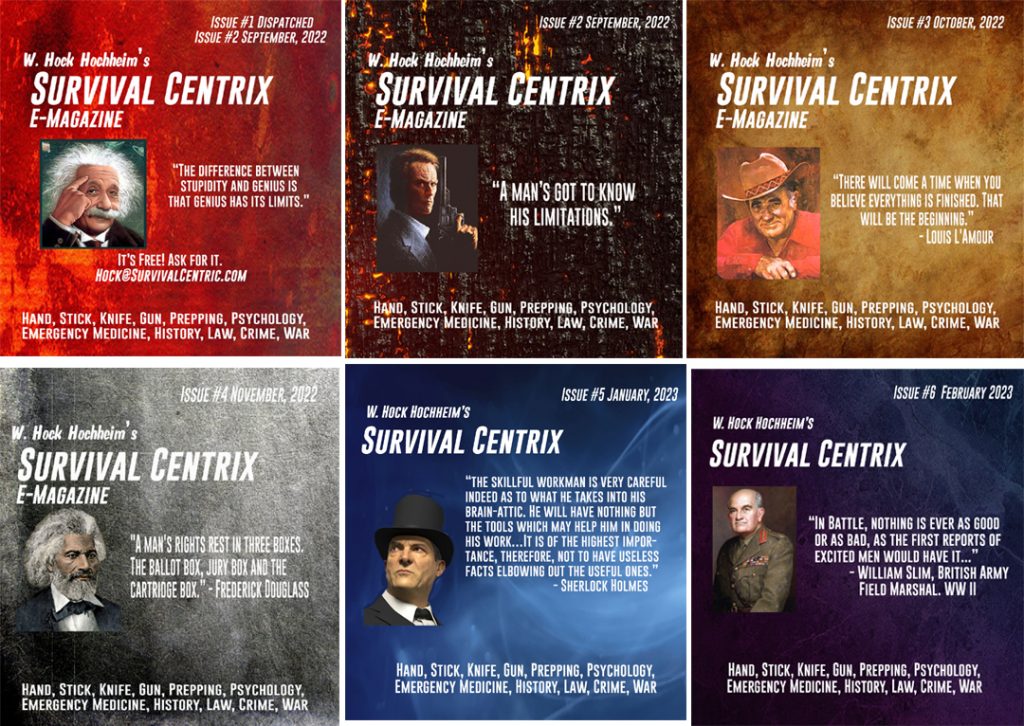
In That Small Café…
In my Budapest hotel this week, arranged by my seminar hosts, I stepped outside for the first to look around. Right across the street was the rear of a magnificent classic building. Such sights are not unusual in Hungary. Weather just beautiful, I stepped to the right a bit, and I discovered that this was an art museum and that it was across the street from a giant circle of historic Hungarian statues of heros. And I realized I had been here-there about 7 years ago, not just “I”, but “we”…with Jane. Spent hours there with Jane.
I was suddenly a bit short of breath, and a sense of “wow” and bittersweet came over me. Bittersweet is what you wish for, a sense of “sadness-mixed-with-great-memory, touch-of-happy-gratitude.” Complicated emotion, huh, once dissected. We’d been inside that museum and on the circle. I walked around the area and saw the sidewalk café we sat in for coffee and a dessert that late afternoon. The café is still there, along the way. Across. And then the bittersweet turned way more bitter. And bitter.
I walked past it, gapping at it. A musical phrase rang through my head over and over, “in that small café…in the small café…” What song was that? I knew the rest of the lyrics would pop into my brain when it cleared later.
But I had to pass the café again on the way back. I saw couples sitting there at the tables and I felt compelled, driven to approach at least one pair, and tell them to deeply SAVOR this simple, everyday moment in time, in life because…because, someday only one of them might pass it by, alone like me. Do any of them even speak English? They might think me a crazy bum bothering them? I didn’t try. I left with only deepest sadness. I returned to the hotel.
“In that small café…” What, what was that…
The next day, near the café again the full song came to me like magic. Of course! It is a harrowing song, a heartbreaker sung by many greats. Sinatra. Durante. Many. I had always thought it just a song about a failed love, but it is also truly about a death.
I’ll be seeing you
In all the old familiar places
That this heart of mine embraces
All day through
In that small cafe
The park across the way
The children’s carousel
The chestnut trees
The wishing well
I’ll be seeing you
In every lovely summer’s day
In everything that’s light and gay
I’ll always think of you that way
I’ll find you in the morning sun
And when the night is new
I’ll be looking at the moon
But I’ll be seeing you
I’ll be seeing you…
These “small cafes” are everywhere in my life, in your life. As I have said before, with great love is great catastrophe. For the one left behind. The ones left behind. I await the bittersweet. Will I ever fully feel it? How many of these love-lost songs are also about death too? Can I ever listen to music again? Will I ever get to just smile at such memories and not break down? Experts and well-wishers tell me I will. I just don’t know.
I wish I could be more positive for you here, but I do know at least this, think about this message when you and a special someone sit at that simple, “small café across the way.” It’s never so simple and not so small.
|
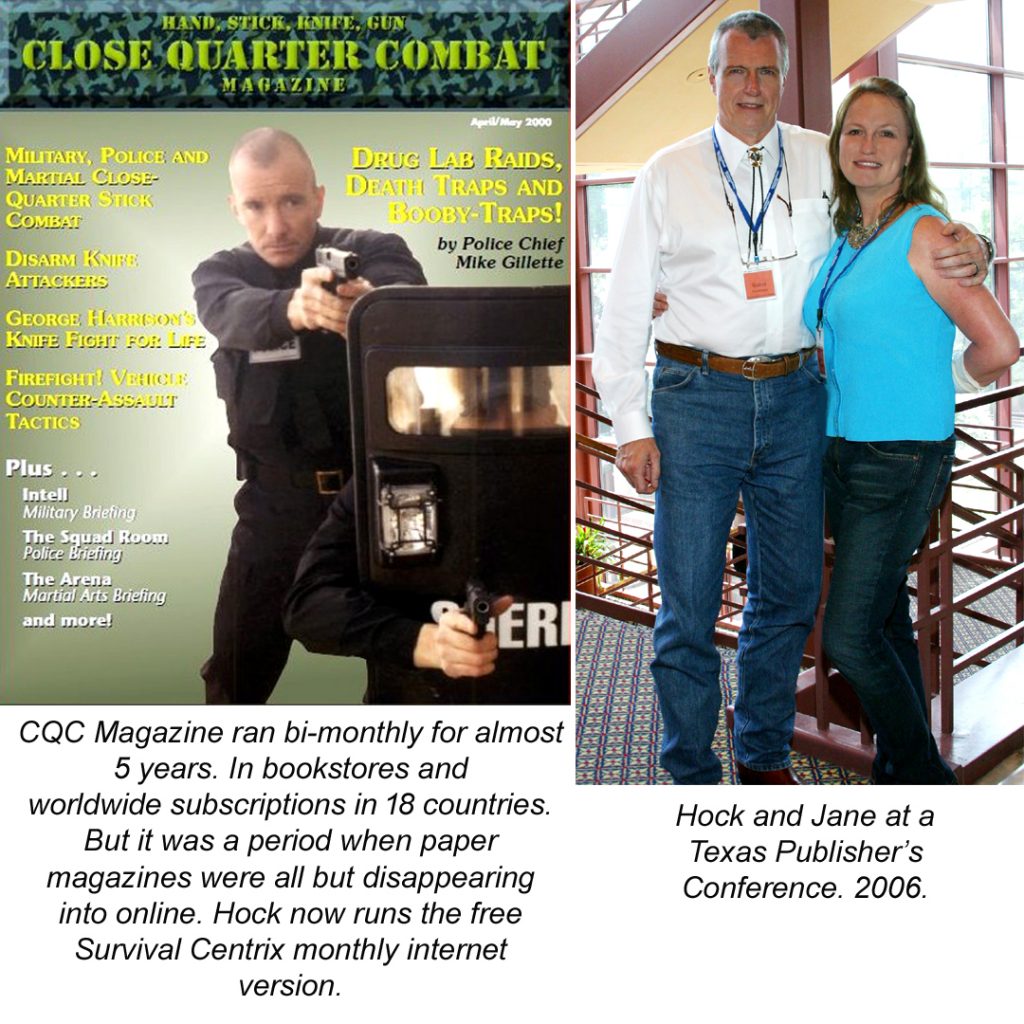
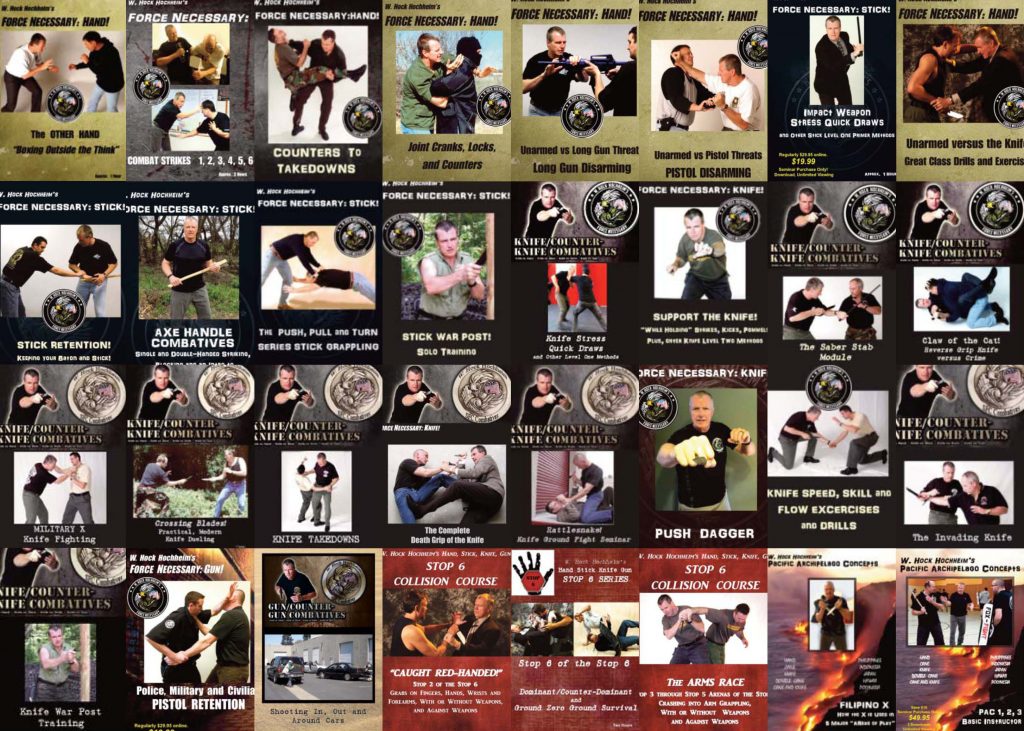
Attacking the Neck for Restraints, Takedowns and Chokes
A martialist must have a working knowledge about the anatomy, physicality and the law when it comes to wrapping arms around the neck for any reason, a walk-away, takedown and/or any choke. Here is quick, mandatory report on what you should know on the subject in general.
First, I would like to establish my anecdotal experience. I am from an era, starting in the 1970s in martial arts and police work where chokes were very popular and roughly trained. A choke was a go-to, common enforcement move and in 26 years I have choked out about 10-12 or so people. That is not a lot, As an obsessive martial artist, training and experience has helped me use alternatives to choking. But I have witnessed and partaken in some 40 or more. Every suspect quickly recovered as we were taught to monitor the suspect’s responses. And I have been attacked by a few chokeholds, most during during arrests (read on for the worst). And in those olden training times, it was not uncommon to be accidentally choked out (and knocked out) sometimes in class. Times have changed.
Chokes were treated very flippantly in those olden times. Sadly, in the recent decades that followed, for whatever reasons – be they a lack of knowledge-training, etc., simple chokes have caused damages and deaths that have enraged into socio-political, national and international uproars. You do not want you or your students, compatriots and-or employees to be a part of such uproars. Results may include imprisonment these days, by ignoring the facts. Chokes are risky yes, but, still, a martialist must have a working knowledge of chokes and non-choke, neck grabs.
While such sport-choke and related sport neck takedown methods are useful to practice and know, they are small in comparison to self defense, crime, law and war problem-solving. So, this subject-study will include civilian, enforcement and military realities, as well as generic, applications of arm wrap, chokes and neck grabs.
Due to popularity and fandom of martial arts sports, most of the neck-related, training attention, time-hubris is spent on sport tap-out chokes down on the mats to win matches and pro fights. This sports version eats up “all the oxygen” (if you will pardon the pun) in youtube videos and internet searches. Several martial arts will claim there are “100s” of chokes, but no. Instead, there might be hundreds of chess-like approaches and situations to inch into these chokes. The choke itself is “checkers simple.” Blood and air.
And important – all neck attacks are not chokes…however, neck attacks are loosely, flippantly called “chokes” or “chokeholds” by many. We’ll be looking at the common arm-related ones not crushing-hand chokes, but crushing hand chokes might cause similar injuries as arm wraps.(It should also be noted here that choking by the hands not arms is a very big domestic violence problem. That’s another essay. But generically speaking, the injuries are very the same.)
The big two… for our rear arm wrap attack and takedown essay and yes – as well as grounded problems, here are two main neck arm-wrap-grabs for rear chokes and takedowns. See the drawings below, single arm and double arm wraps. You will find there are numerous nicknames for chokes. Some do help identify the move-position. Blood chokes are often called “sleepers” because the “chokee” thinks he is really just neck-uncomfortable and still okay… and… and… he’s out. While an air choke will probably cause the chokee to “air swim,” like he is drowning on dry land.
What are the legal and medical definitions? Law Insider defines a neck restraint as “the use of any body part or object to attempt to control or disable a person by applying pressure against the neck, including the trachea and-or carotid artery with the purpose, intent, or effect of controlling or restricting the person’s movement or restricting the person’s blood flow or breathing, including chokeholds, carotid restraints, and lateral vascular neck restraints.” (For the record, a “Lateral Vascular Neck Restraint® (LVNR®) is a control technique applied to the sides of the neck, using a combination of physiological factors to restrict blood flow to the brain which may cause the subject to lose consciousness.)
Dr. Google defines choking as a strangulation. “Strangling cuts off the flow of oxygen to the brain in one or more ways. Strangulation compresses the carotid artery or jugular veins, resulting in cerebral ischemia. Cerebral ischemia is caused by disruption of the blood supply, and thus oxygen, to the brain, particularly the cerebrum. Global ischemia is caused by cardiac arrest, shock, carotid occlusion,hypotension, asphyxia, or anemia. Focal cerebral ischemia is usually related to cerebral vascular atherosclerosis. Strangulation is defined as asphyxia by closure of the blood vessels and/or air passages of the neck as a result of external pressure on the neck.”
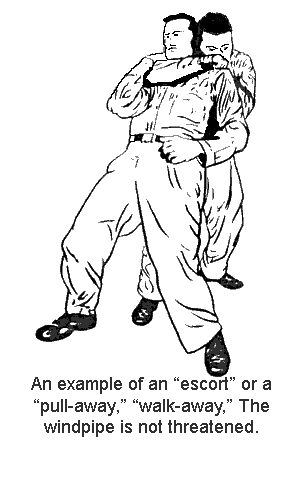
Tick-Tock…. In May, 2023, a former U. S. Marine interrupted a disturbance and threats on a New York City subway with a choke, one that according to witnesses the hold lasted 15 minutes. The person died. The Marine disputes the time length and denies lethal intent, but nonetheless the man died. This caused a serious socio-political incident and put the Marine under indictment for murder. One must be very cautious when doing any neck wrap choke-contact for criminal and civil problems. Did a restraint slip into a prolonged blood choke or an air choke? Did the hold last too long?
Very Well Health reports that, a “A medical evaluation is crucial if someone’s been strangled. An injury to the trachea may not appear to be serious right away, but swelling in the tissues around the trachea can lead to a secondary restriction of airflow a few minutes after the neck is free.”
So how long can you squeeze? Police files report officers that have blood-choked suspects held for 30 seconds have died. That’s a short time. But shorter times are on record. There are other times the suspects hang on, struggling for longer. The old and general advice with a blood choke is to monitor the opponent. You can feel when someone “goes to sleep.”
How long is long then? “A 17-member panel of submission experts (including BJJ black belts, experienced grapplers, former MMA athletes, and medical professionals) analysed 81 UFC matches between 1993 and 2020 that ended in strangulation submission due to a LOC (as opposed to tapping). Each examiner reviewed each film (blinded to the other’s interpretation) to determine the time between full application of the technique and LOC. The mean time to LOC was 9.0 seconds, with a standard deviation of 2.5s. (Note: this had to have included ground chokes and this section of Level 2 takedowns is only covering standing rear arm wrap chokes. Still we can glean related information.) These results were consistent with previous studies in compliant volunteers, indicating that skillful application of a choking/strangulation technique will cause LOC regardless of defense mechanism…the triangle choke (probably down on the mat) displayed a significantly faster time to LOC of 7.2 seconds.” – Sam Gilbert
Crushing the trachea can cause death. There are incidents on police records of officers who are relatively untrained in this subject matter and they have accidentally crushed the trachea. The damage can range from minor vocal cord weakness to fractures of the larynx or trachea. These fractures can cause air to escape into the neck and chest, leading to significant respiratory compromise and even death if not treated quickly.
Basic neck structure injuries too… As I have mentioned not all neck-related, rear pull takedowns involve blood and air restraint, choke-to-unconsciousness intent. In terms of using the neck for takedowns and counters, in some cases you must worry about damaging the neck skeletal structure. But non-chokes are not without some medical, legal and civil law dangers.
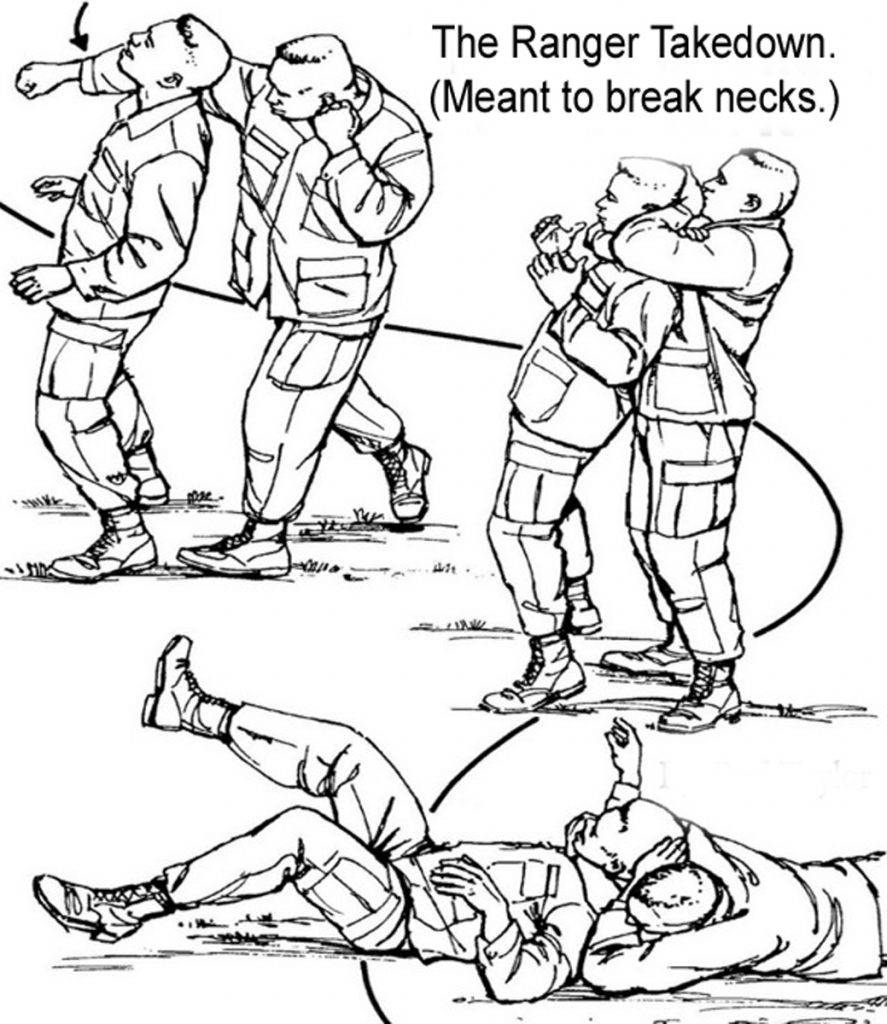
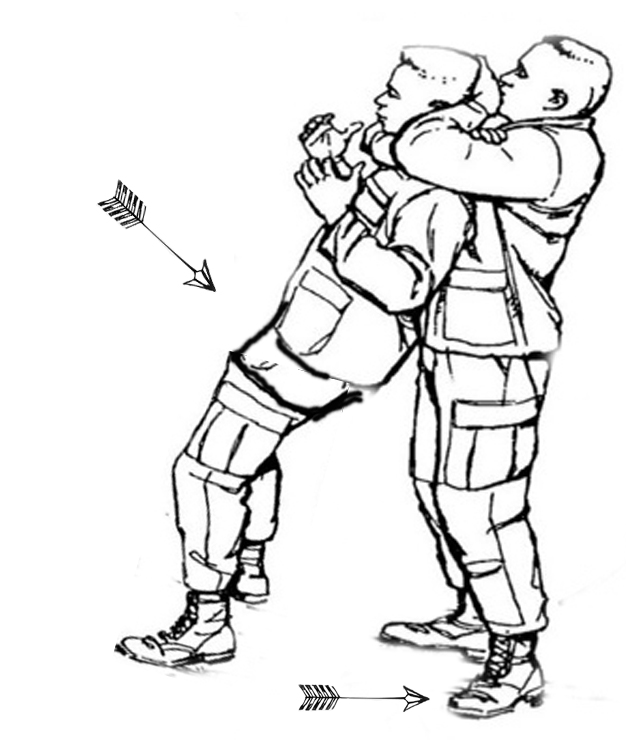
Other related neck structure injuries? I know of a few rather world famous, life-long MMA champs that have stents placed in their trachea due to decades of rough training simulated chokes, and real competition chokes. This operation is called a tracheostomy.
Dr. Earl Morgan, Forensic medicine (and a Judo Black belt) adds…”In all of the combative grappling sports the “choke” hold rules require varying degrees of cervical spine protection. Of course, what makes repetitive chokes in combative grappling so safe (in class) is the health and conditioning of young martial artists. My college judo coach cautioned me to seriously consider allowing chokes in anyone over the age of 40. At the time I was in my 20’s and had no idea what the big deal was. He also spoke of the ‘40-year syndrome.’ This is where you turn 40 and suddenly you have all the aches and pains from all the ways you abused yourself when you were young, whether with drugs, alcohol, athletics, manual labor or other factors, it doesn’t matter. He was a much wiser man than I realized.”
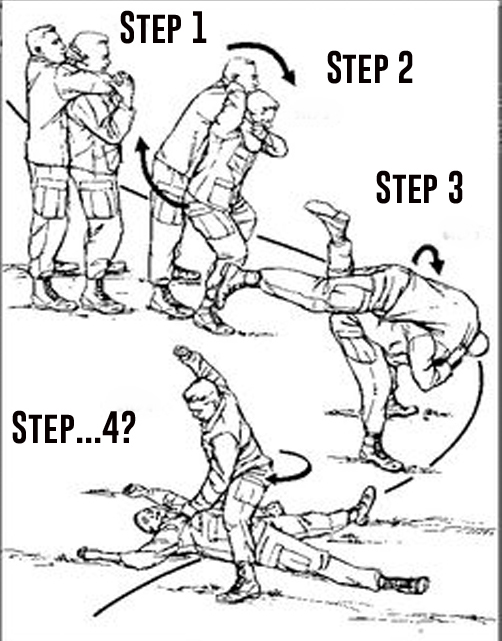
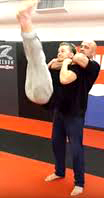
Banning chokes...I have been paid by some police agencies through the years to write subject-matter-expert studies on the validity of neck restraints and chokes. In some jurisdictions worldwide police agencies have continued to defend the use of the carotid restraint hold for decades, claiming that it is safer and more effective than using a police baton, taser, or pepper spray. Other jurisdictions have banned its use entirely while still other jurisdictions have ruled that it may only be used in extreme situations where deadly force is justified.
Most enforcement agencies worldwide have banned this “choke’ tactic (or any neck contact for that matter) for many years now. Some allowances exist for when the officer is faced with deadly force. Yet, in a strange Catch-22 circle jerk, these last-resort, life saving choke options are still NEVER TAUGHT, for fear of…being publically seen-caught just teaching the dreaded chokes!
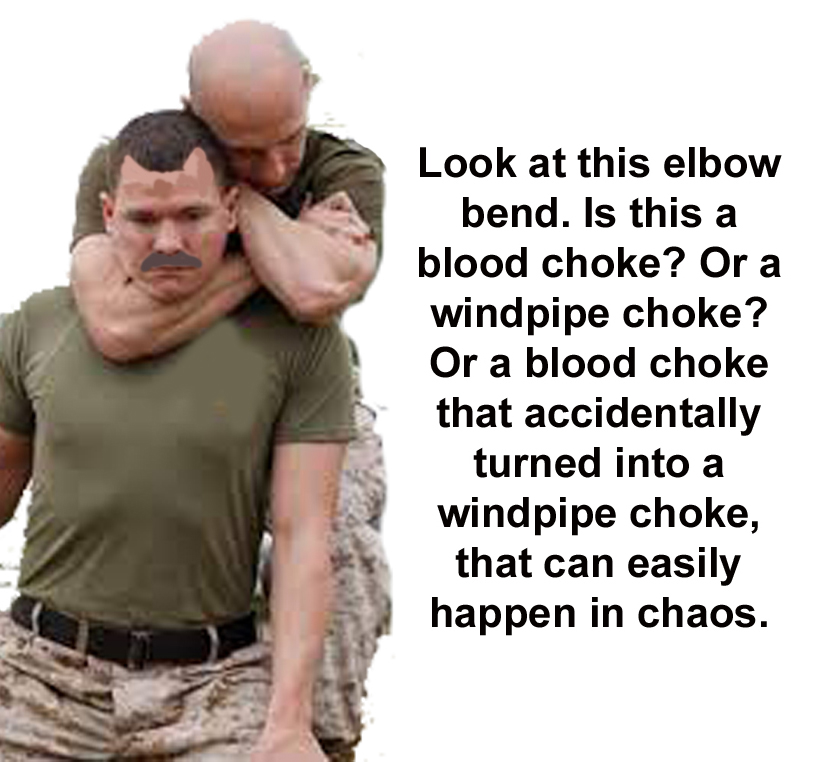
At least think about this...In a military context, other than when trying to capture prisoners, a choke is a strangulation meant to kill the enemy. But for citizens? These same legal-test concerns hold true for citizens. Civilians must be justified under a reasonable dire threat to windpipe choke someone. If you can’t comprehend the facts here, or be able to consider, discuss, teach and articulate them, you and yours might someday be in moral, ethical and legal (jail and lawsuit) dilemmas.
(This essay on non-choke and choke related neck wraps rear takedowns appear in Level 2 of my Force Necessary:Hand course, thus the essay here, which appears in the outline and my upcoming Unarmed Combatives book in 2024.)
______________________________________


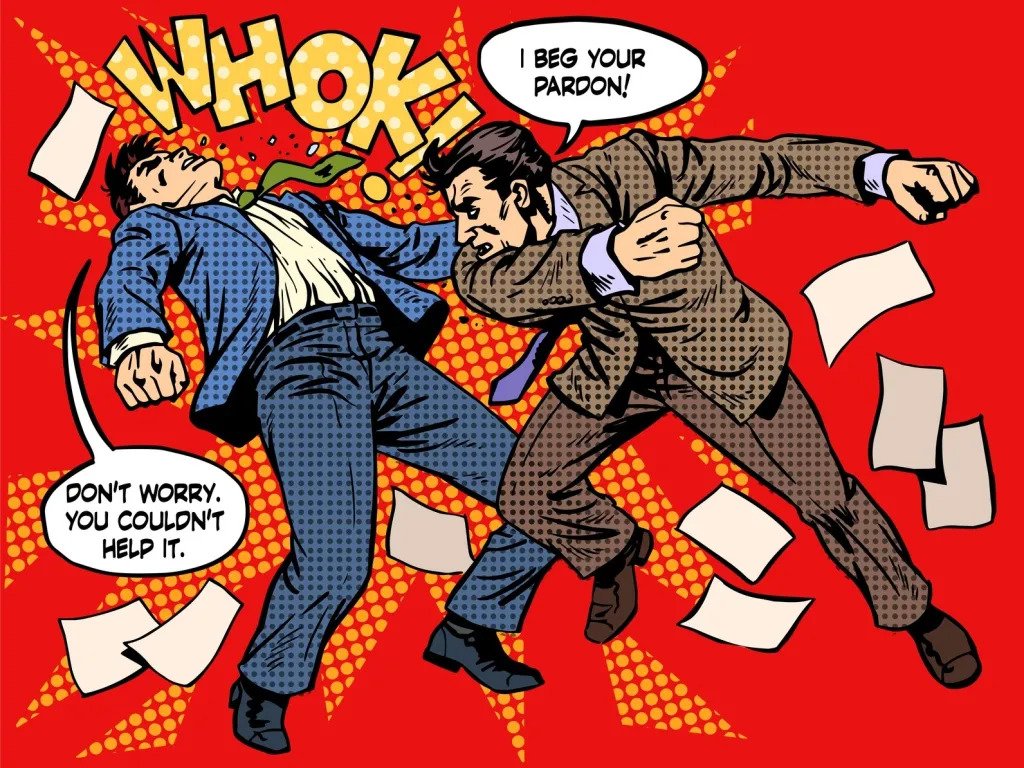
 There are so many examples of this routinely happening. We are probably all familair with misguided use of martial material applications. Look at the May, 2023 case, poor, well-meaning, former Marine case on the New York Subway, choking a crazy guy accidentally to death. Recently again in May, 2023, a woman was attacked by an immigrant in Denmark, an attempted rape. As he tore off her clothes, she sprayed him with pepper spray. Now she is under arrest for illegally carrying pepper spray! The rape suspect escaped. Too many examples to list.
There are so many examples of this routinely happening. We are probably all familair with misguided use of martial material applications. Look at the May, 2023 case, poor, well-meaning, former Marine case on the New York Subway, choking a crazy guy accidentally to death. Recently again in May, 2023, a woman was attacked by an immigrant in Denmark, an attempted rape. As he tore off her clothes, she sprayed him with pepper spray. Now she is under arrest for illegally carrying pepper spray! The rape suspect escaped. Too many examples to list.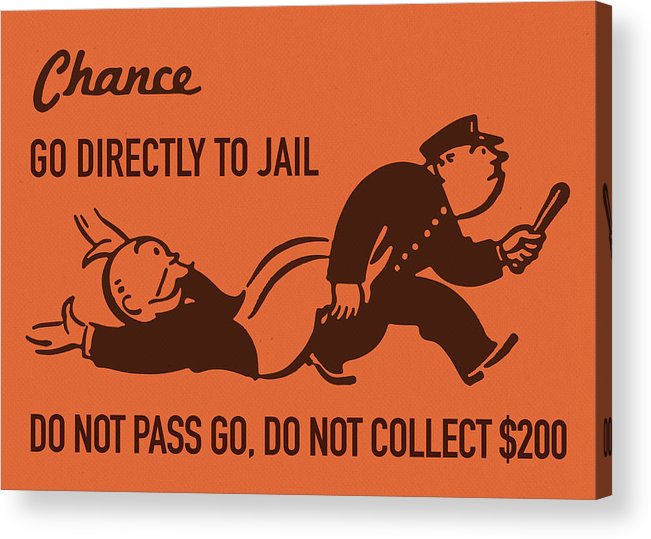 When challenged in court, your system-art will be examined. This does come back to the “What” questions. An instructor-practitioner of any art or system has this responsibility and should answer these “What” questions.
When challenged in court, your system-art will be examined. This does come back to the “What” questions. An instructor-practitioner of any art or system has this responsibility and should answer these “What” questions.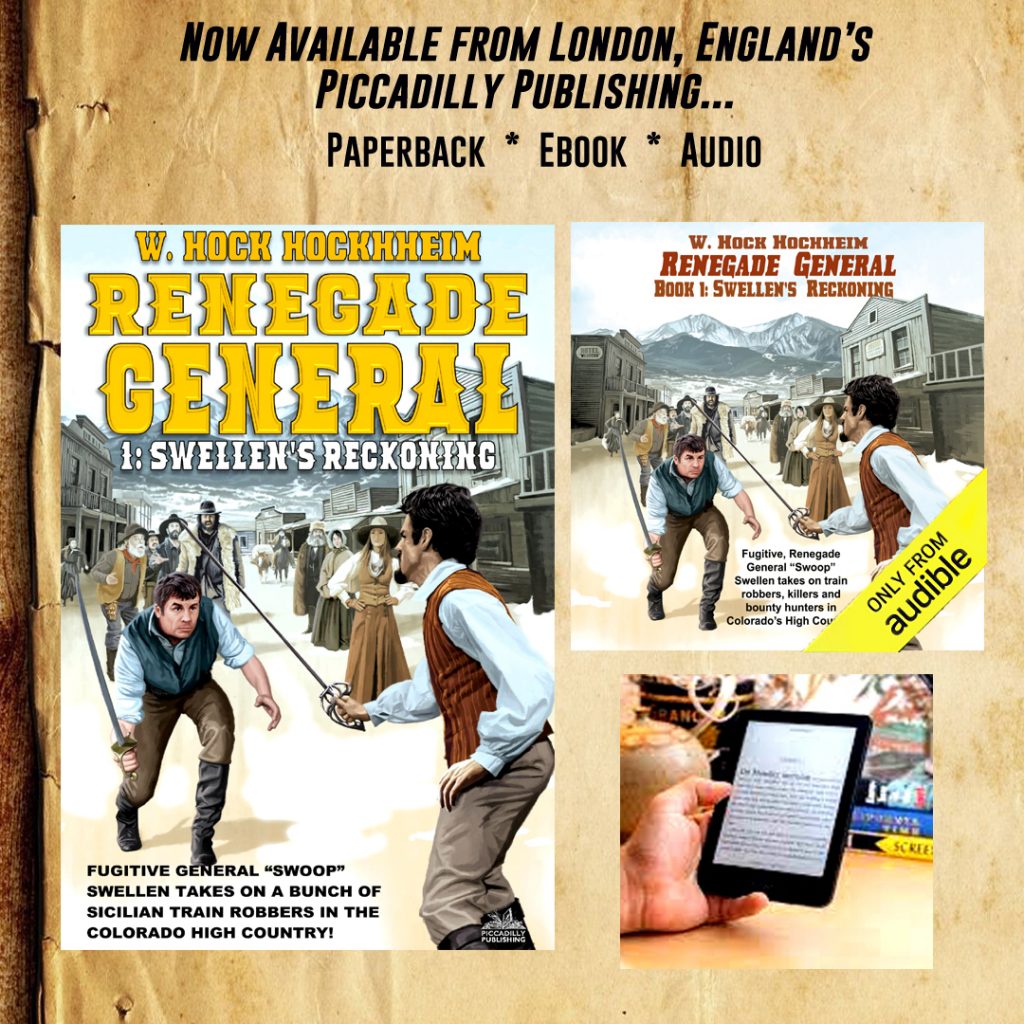
An Orderly or Tactical Retreat, (safely walking or running away!) Stay or retreat? A retreat has several definitions, like “retrograde” movements or a more modern “tactical retreat.” Usually, these definitions suggest that one retreats from a superior force in battle. Military. In today’s civilian world, remaining to fight and take action, may become a physical, legal (criminal law and civil law) nightmare and monetary problem. Winning and the law are often at odds.
Whatever the terms, retro, orderly or tactical, it still means you leave, escape, withdraw, whatever, with the best plan to do so. For a smaller, personal situation an orderly retreat is leaving a confrontation, safely and without being chased, at all, or much.
“Just run away!” these pseudo experts will say. But, just how far can you run? How fast? How long?
The law will ask, if there’s trouble, why did you go there and why are you still there? Can you leave people behind? Will you be leaving family, friends and comrades behind? Can you leave? Should you leave? Sometimes you can’t leave. Your choice is highly situational. Think of any violent situation from a fistfight to a crime, to an active shooter, on to war and ask these questions about staying or leaving?
How exactly will you retreat? If you stay, there will be violence. If you go? Best go in an orderly fashion. When you add the term “orderly,” it speaks of significant specifics. What is this “orderly” version? An orderly retreat?

In his beginning battles he had some large causalities usually from chaotic retreats. When his troops hit their perceived “breaking point,” hey turned and they scattered, most were killed from behind, running in disorderly retreats. Long known, psychological factors reveal that it is easier to “kill from a distance” and to “kill from behind,” without seeing a person’s face, without seeing a “personality.” (This relates to crime also.) Then, Alexander adopted he Macedonian 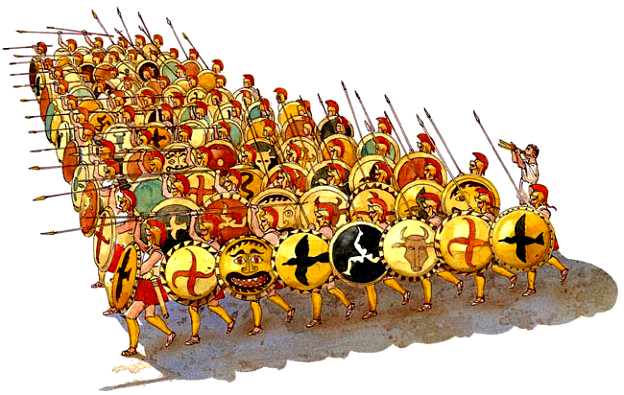
Simply turning and running away, sounds like good advice, but how far and fast can you run, and such may make you easier to be killed, and may ignite an anger, and/or ignite a hunter-chase mentality in a criminal or a enemy soldier. Departing, withdrawing as smartly as possible is better choice.
Turning and leaving. In the martial word, just turning from a too close opponent standing or down on the floor-ground, is “giving up your back” and means something specific to martialists – exposing your back is an invitation to be choked. In crime and war your turned back make you easier to be beaten, captured or be killed. When you turn to leave, it should be done by first backing away in some manner to a safe distance and then turning to leaving.
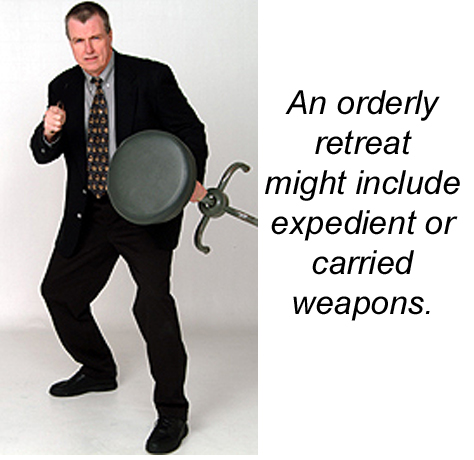
If no physical contact is made yet, we are still in the Stop 1 parameters and leaving the projected fight scene before it starts, is a quintessential Stop 1 situation-problem. But the option to leave may occur in any of the Stops, Stop 2 through Stop 6.

“Hock, sometimes you gotta’ blow the horn,” (the horn being thetrumpet of retreat.) “Always have a go-to hell plan, and another one when that one goes to hell too.”
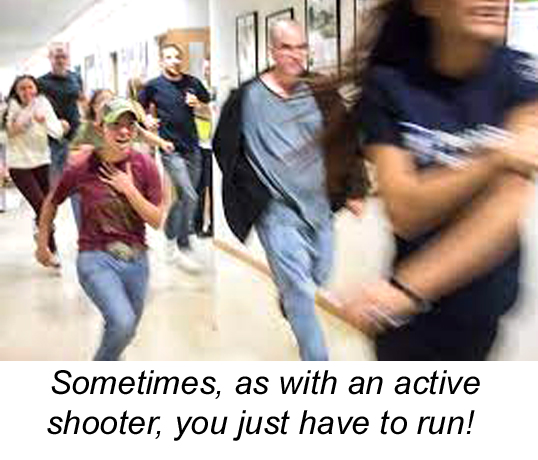
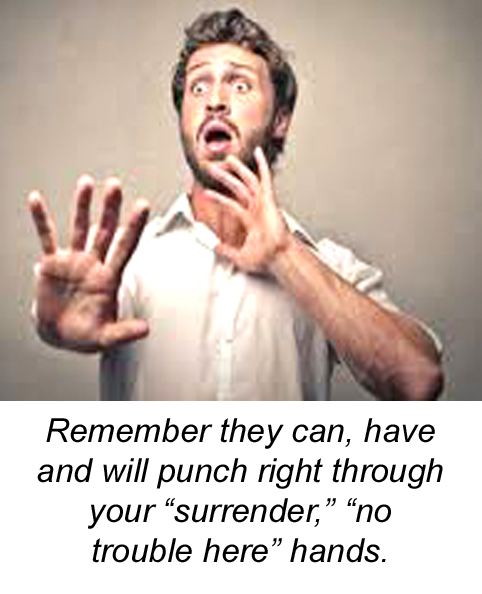
There is no one way to prescribe any one universal orderly retreat, but it is important to understand the concept, teach the idea, and develop and practice some real, “go to hell,” plans.
___________
Watch some free, full training films on Hock’s TV Channel! Click here…
My first Guro Dan Inosanto seminar was in 1986 and he told a story about his high school football team. (I forget the pro players he mentioned). He said that he was a running back and kept crashing into the defense. The coach asked him why did he run the ball that way? Inosanto replied,
Dan did pick and with that advice and he broke many state-wide, California high school running back records. He also added once that his coach made them run up and down steep hills in practice and to run down the hill as fast as possible. Since it was a hill, you ran faster down than on flat ground. Inosanto said it was “a bit like flying.” The coach told them to “remember that feeling of that speed. Mimic it.” (You usually learn a lot of related things at an Inosanto seminar.)
There are dreams of advancing, then there are tools to become advanced. Who knows those tools? I’d never thought much about these things before then. I also, needless to say, wanted to mimic Dan in terms of his knowledge, teaching and overall “cool.”
Improving. I mean, we all knew back then to weight lift to “get stronger,” and to run for endurance. What else? Well, repetition was important. But then who or what were we repeating? Mimicking? What of dedicated inspirations, guidance? Sure there was the Bible and Zig Zigler back then, but I’d never thought about codifying these diverse training ideas, inspirations and tools before 1986. They came very scattered. I was not alone.
I grew up in the New York City area where one could play baseball and football endlessly through countless organized leagues of all ages. I was playing baseball until I was 18 years old, among guys in their 20s and 30s in money-sponsored teams. (I left the area at about 18.) During these times, I and all others were under the influence of numerous coaches, and none had any real savvy about serious, performance coaching, a “teaching I.Q.,”even in high school where baseball, football and wrestling were big. Sure there were tips and some mistake-fixing yes, but not like today.
They’d say, “Playing is learning,” and we hear similar with martial expressions like “Learn to fight by fighting.” But that tops out too at-with your natural level of athleticism. Remember the prematurely athletic teen that was always the superstar high school quarterback? But 99.999% of them end up working in a factory. They topped out in high school. How to advance? Most coaches back then could not perpetuate such advancement. It seemed like much “mimicry” was a main teaching tool back then. “See how ‘so-and-so’ does it. He’s successful.”
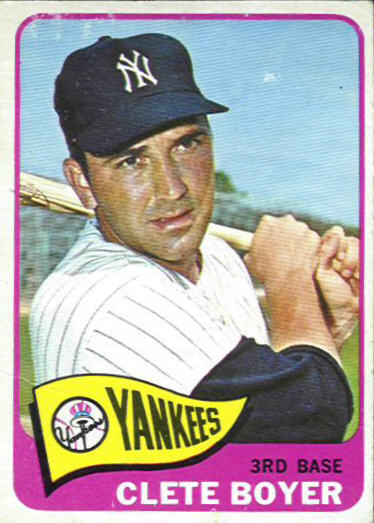

The coaches and Willie identified every single thing in baseball he might face, every little episode, every event. Catching a ball this way or that way. Running from first base to second base, first to third, etc. To my memory they identified some 30-40 specific events, very big and very small. And, during that off-season at this ground-breaking camp, Willie did every one, 100 times each, almost every work day, under their watchful eyes. As a result, he had a rebirth in performance and played several more years successfully. He went back every off-season until other factors, mostly age, interfered. Wow. Another epiphany for me. Tools. Steps. Skill exercises, big and small. Set me to thinking about diverse applications in teaching. Teaching technology, so to speak.
Thank goodness since then, this skill development, this training methodology really caught on, widespread, even down to grassroots, neighborhood league coaching. Officially! (When I coached my kids’ baseball teams I made it a point to take players aside and work on specifics in sessions.) For the last few decades we see this influence in every sport. Records of almost every sort have been broken. The talented continued to improve, The mediocre became better. The lost became at least, found. I also noted such advancements in high school, college and pro football. In the last decades we hear professonal football players talk about the difficult leaps in training from high school, to college to the pros. These methods are all another good form of mimicry too. Mimic the pros’ training methods, not just performance.
Are you way too lanky, tall and skinny to be the baseball catcher? There are reasons most succesful catchers are shaped as they are. We have to remember we are all different. Basic boxing is much the same, but Mike Tyson should not fight like Muhammed Ali, and vice-versa. Dan Inosanto should not run the football like Joe Jones. Don’t over-train in tennis to be a basketball player. Reduce the abstract. Isolate the skill steps and build them. In the Who, What, Were, When, How and Why questions I live for, this is a big “who question.” Who are you? Shape, size, age, strength, etc. Who do you mimic?
Who are your heroes and to what end? Coaches and teachers in these essentially cookie-cutter, sports and martial arts programs must be careful and recognize these differences. Is your “ku-roty” or combatives or self defense teacher a super-star athelete, power-lifter that oh-so does-looks the part? And…you’re not…can you recognize these reaities?
This is why I am obsessed with identifying and teaching the universal, versatile, achievable, core, survival basics foremost. What can most people do? Grasp? Get that stuff done. Work on the probable problems first, then the improbable. Then with good coaching I.Q., recognize natural attributes, steer developments and push people to their private mission success. Its one thing to play a lot of “baseball,” it’s another to excell at third base. At some point, customization must step in.
There are dreams of advancing, then there are tools to become advanced: Two very different things. A major way one advances is with speed, flow and skill drills-exercises. You can’t over do these as many do, else you become a “drill master.” Ask these classic questions:
I am 70 years old now. I have been training and teaching all over the world, meeting with and working out with all kinds of people. Listen to me for a great and important tip. Your “who” changes with time…oh…what…every 5 years or so? Can you still do your once favorite moves? That high kick? That sacrifice fall on the mats, lest of all on cement? Can you still clearly see that front sight on your gun AND-OR your target as well, or are they blurry blobs? Can you still hit that fast ball? Do you need to alter-evolve, dismiss some of your favorite things? Can your 50 year-old self, mimic your 20 year old self? Take stock every 5 years or so of what you do.
There’s a lot to this “mimicry” subject.
______________
Check out Hock’s free Survival Centrix newsletter . Send your email address to Hock@SurvivalCentrix.com
The Fallen Drill, Live Fire and Sims Fire, Standing, Falling and Fallen Target Practice
He moved! A universal problem in many martial arts, mixed weapon fighting, combatives and survival firearms training is that people move. When people are struck, kicked, stabbed, slashed, shot, etc., they…move. They move from your set-up for the first strike, – yes, just the perception of your first attack be it facial expression, words, stance, chambering, drawing a knife, stick or gun, may cause them to move on cue just before you strike. Or they move after the first hit, the second strike or the third…
In many systems you’ve been trained for a set of attacks or shots. Sets of two? Sets of three? Stop and reload? These reactive movements on his part are often ignored or forgotten in training drills. Still we hit, stab or shoot the mitts, or a heavy bag, or a paper target in sets. In many of these sets the body targets are vague and not well defined.
These routines are organized by you, or by an instructor of a system. How smart are you? Are they? Is it? What is your-their “martial IQ? Do you or they ever calculate logical probable. post hit movements?
The faster you attack, the better chance the second strike-shot on the target might be where you planned it, such as maybe with a super quick, two-punch combination to the nose-face? Or say, two or three very quick trigger pulls on a gun? Yes maybe, and no maybe.
But as an instructor we must warn our practitioners about these reflexive-reaction, spoiler-movements, and advise them that many of the elaborate focus mitt drills, martial art combinations and shooting drills might be SNAFU-ED when the enemy naturally, reflexively, responsively moves. Warned that their first or next designed target spot may well move and you might have to chase it a bit. Or, ignore it and adlib something else.
I constantly see long, complicated focus mitt drills that have zero relation to realistic body reactions of those hit. These long drills become like demonstration dances to impress onlookers and make one sweat for a workout. I am not saying they are all worthless, no, just that they could be planned smarter. They could be composed to guess where the opponent might be after step 1 actually landed. Where then should step 2 logically be? In the unarmed world, good sparring gets this chaotic introduction done. You learn to chase targets. Adlib to take what you see, get..
I have been in numerous martial arts where we memorized 3, 4, 5 or more moves on an attacker who is just standing still like a statue after his own first punch at you. You block and respond, beating the statue-man to death in many moves. But the opponent is not reacting to the 1st, 2nd or 3rd strike or kick, the training partner-uke remains upright and still, until the scenario calls for his takedown. You then takedown, trip or throw the statue enemy. In this regard, it was an old school concept that the takedown you chose, is the one that best facilitates the direction he is already falling in after you’ve cracked him some great strikes. You don’t or shouldn’t change or stop his falling direction. You…facilitate his falling direction. So in this old-school rule of AIki-Jitsu and old Jujitsu, they recognized the opponent was…moving after being struck.)
I was always flabbergasted at various knife systems through the decades that memorized numerous elaborate 3, 4 or more body template, patterns of stabs and cuts. “Stab the heart, then deep cut down to the kidney, then stab…” First off, dear detached-from-reality person, the body has bones in it and second, the enemy…has probably…MOVED after your very first stab! His kidney is no longer where it was in your splendid, one-dimensional, flat, frontal template. Your 3-4 step templates are basically, misleading, distracting…BS.
The enemy movements will be…
Frozen? Yes, he might be frozen in place, especially if your first attack alone isn’t strong enough to move him. We all know about the “flight, freeze, fight” studies, so to be thorough we must list it. But he probably will move.
In short, you probably have to chase the targets. The solution is to construct training responses that try to predict with some certainty where said enemy will move in response. To counter these practical problem in doctrine, an instructor with sufficient “martial IQ” must prep the students with these realities. This does sort of ruin and-or, de-emphasize the whole list of required, memorized 4-5 step statue fighting some martial arts demand. The instructor should warn – “After this strike, it is possible, probable that said person might not be where you expect them. His jaw is not there anymore. His liver is not there like in the set…he moved.”
Guns! Wrong End of the Barrel. I hope by now I have established the idea that people will move and may not be were you expected them to be from training drills? Since I teach hand, stick, knife and sims ammo GUN, I have to ponder this problem in the pistol and long gun world, which is what I really want to dissect-remind here.
The Gun Blast! Yes it is true, some people. somewhere. sometime will absorb some fast small caliber shots and keep approaching or freeze? Will they? And for how long to overcome the elements of just the gun blast alone? I mean, just stand beside someone shooting a firearm on the range without hearing protection. Take note of the force and sound expelled. Now imagine that aimed at you. I would like to mention that the sheer sound and blast of a gun would-could cause people to…MOVE, cringe, startle, curl, bend, jolt, shut eyes, dive, fall…
Will Bullets Move People? A number of gun folks like to discuss and argue about the force of a landed bullet. Science tells us it must land with about the same force as the recoil in your hand. Yet bullets landing on certain anatomical parts into certain positions seem to make people move more than recoil, and flesh and bone destruction can make them fall, least of all from multiple, successful bullet impacts. These reactions may ruin your second or third shot plan. Shot folks, or shot-at folks will also and quite probably move. These movements differ from the standard flat, full-frontal target picture you have been practicing your marksmanship on.
Handgun (and rifle) Combatives. I believe that people are not fully, really learning firearm combatives unless moving, thinking people are shooting back at them, or at very least threatening them close up in a deadly force situation like with a knife or tire iron. This experience absolutely requires interactive, safe, simulated ammo training.
Some old gun hands have called the shooting range a “one-way street,” and you need a “two-way street experience” to maximize your combative skills. It is somewhat horrifying to learn how easily you can be shot, even with the best one-way street instruction. I mentioned earlier “Good sparring gets this introduction done.” Interactive simulated ammo scenario exercises get this two-way street done too.
“It is somewhat horrifying to learn how easily you can be shot…”
Since I almost never teach live fire marksmanship and leave that to the patient experts, I concentrate on simulated interactive shooting. In a perfect world seminar, I always prefer to partner up with live fire experts whenever possible and ask them to do a live fire version of what I will teach later with simulated ammo, but I have a few live fire drills for a predicted response to shooting an enemy that moves and-or falls. Here’s one – thus the “Fallen Drill.”
The overall premise is, you shoot the armed bad guy and he begins to fall. He’s still armed. Still looking at you. You shoot him on the fall, and you shoot him when he’s grounded, should he seem cogent. The live fire version featured in the top photo above requires a little rigging of targets and the target stands.
By the time they get to my turn, practitioners have already done their important marksmanship training, and now we are shooting real people with the sims guns. We are shooting real people and the “scoring” is “miss or kill,” you might say.
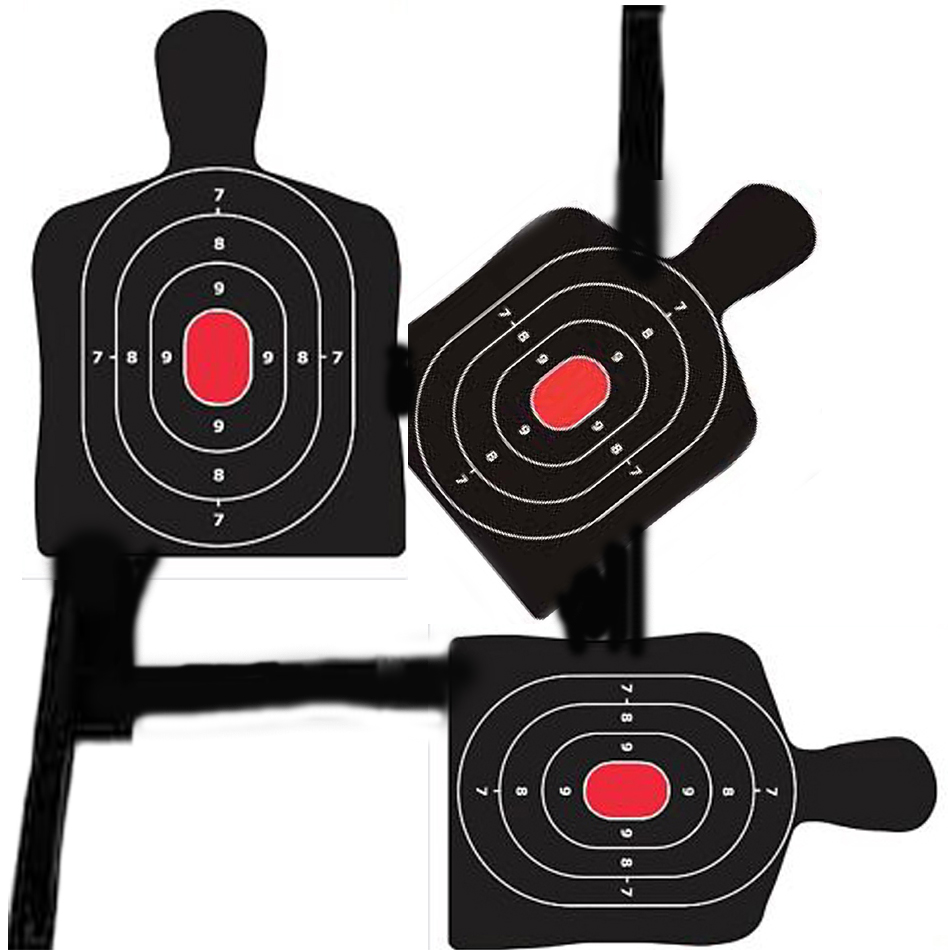

I and a few others have written through the years about the sheer stupidity of forcing police and military shooting training to shoot unarmed, non-human shaped targets, to be politically correct. This is counter-productive and ignorant. This is a giant step backward in combat shooting. The training rule of “reduce the abstract” applies. While typically round, and-or non-human shaped targets are used for pure marksmanship development and competitions, when you get into the combatives training, human-shaped figures (photo pictures of real people are better than drawings). It is also not good to shoot at targets like this photo below, that are unarmed and threat-less.
We should not be practicing to shoot unarmed people! (About 99.9% of the time, as it is situational. And next we should not be shooting at unarmed people targets. It’s not good training for the brain and reflexes. Firearm combatives training targets should always include a weapon to prep-instill the instantaneous, mental recognition, justification for lethal force. It’s bad enough we spend so, so much time shooting at bland, non-human-form bullseyes and various odd shapes. When doing combat shooting training, at very least “arm” the realistic target!
Anyway, I invented this “Fallen” live fire and simulated fire exercise in isolation. You and others may have something like it already too, as most inventions are made in isolation. If so? Good for you. Now let’s pass it on…
Oh and remember, he moves, but so do you! Which is a whole other subject essay.
___________
Hock’s email is Hock@SurvivalCentrix.com
Don’t forget to get this books, now available in KIndle Ebooks, which might be free for members! Get all the info, click here
Every competent person, every competent organization has or should have a refined “mission statement.” It’s where you start. Like so many operations, and in a training company like mine, the mission statement is how you build and direct doctrine, avoid dogma, confusion and even hypocrisy. People-companies within their sphere must seriously define, the – “what we do.” One way to really help define what you do is to also seriously define what you won’t-don’t do.
Mission Statement Consequences? – Keep in mind, there will always be both good, planned consequences and unintended (bad?) consequences. Be flexible enough to make sense of things, changes and challenges.
In the 1990s, interested only in the generic, mixed-weapon world of hand, stick, knife and gun, self-defense survival (and enforcement-security), I decided to refine my Force Necessary mission statement to also explore what I don’t do, what I cannot make, and what I would not produce. This is a truth-and-honesty mission statement for me and for my “customers-practitioners.”
By simply understanding won’t you are not, you are not trying to limit yourself, you are trying to be realistic and stay…on a mission. The “no” reasons, the “why,” for each topic listed below might take a few lines, a paragraph or perhaps in some cases a book chapter to explain, but not a whole book to explain. But, no such details are pontificated here for a such a short essay as this.
A martial arts customer-practitioner needs a mission statement too and most NEVER-ever have. They just walk into schools like “dumb and dumber,” looking for things that the school doesn’t offer, that they saw in a movie last week. Revealing your different reality doesn’t always fit with the join-up, lobby sales-pitch.
Just in the teaching business with a school? Exist in that classic 5-square mile, demographic in a hunt for customers? You are at ground zero. As school-owners, don’t follow me and my “don’ts! Remember I have no school, my market is different, so don’t mimic me. Keep the kids and the uniforms and the dragon posters! Stay alive! And look, many people “change hats,” right within their diverse school. Then you should have a mission statement for your karate class, one for FMA or BJJ class and any other mission-hat-statement for your self defense class. I do want you to be happy and healthy, pursue your interests and hobbies and be successful. If you are happy? I am happy. But you still need appropriate mission statement…hats. It’s all a hat trick!
There is a not-so-old expression (and at my age I know what an “old” expression is) the new kids call – “staying in your lane.” What you are not, helps you understand what you are and helps you stay in your so-called “lane.” (This is true of life in general too.)
But for me exactly? If you are questing for the above traditional, sport and art goals, I can only quote Bob Dylan,
“It ain’t me babe, no, no, no, it ain’t me babe, it ain’t me your looking for babe…”
______________________________
Hock’s email is Hock@SurvivalCentrix.com
Watch free, long training films at Hock’s TV Channel, click here
In the big picture of fast and furious, speedy, adrenalized stick fight, where does the single stick disarm exist? How can it? Let’s take a look. An important way I think for starters, is to first examine the overall Filipino Martial Arts (FMA) subject of stick versus stick disarming. I identify really only FIVE stick vs. stick disarm categories…in the universe!
Thus far for me, all the disarms in the universe, the galaxy (!) fit well into one of these 5 general categories above. Impacts and lots of circles and push-pulls, huh? Which is another way to help teach and summarize-explain the subject. List the raw movement concepts within the 5 disarm categories. Here are the three raw movements inside all the disarms categories.
I have had the opportunity to dissect and teach this list of 5 disarm categories (and their 3 movements within) around the world for years now and some, even semi-famous FMA instructors refused to believe this 5-list rendered, simplicity.
“How can it all be that simple? NO! It can’t be,” they sometimes say, “well then, what about this one?” they ask and show a disarm.
“Well that’s a strip and keep because you caught and keep this stick,” I would say.
“Well then, what about this one?” Demo…
“I would say, strip and send because shipped the stick away.”
And so on and so on, the challenges were fun to explore and always help me refine, refine, refine.
Five categories. Three raw ways to do them. Simple? Complicated? Traditional disarms are often taught and passed on in disorganized ways, usually created by artistic people with no scientific sense or teaching-organizational skills (like so many nutty katas, huh!). As a student in various FMA systems since the 1986, I have seen many of these disjointed disarm lists that miss the opportunity for smooth education, conformity and simple understanding.
For example, many disarms are glued to traditional angles of attack system. “Guro Jose” has 10 angles? And he demands – “Do this different disarm at each angle. And here they are. Memorize!” Many traditional disarms are passed along by doing…say…one mandatory disarm at their angle 5, (6, or whatever angle), when actually an angle 5 attack might be disarmed by 3 or 4 different ways. Best to pick a disarm category first and experiment doing it against all 10 angles. It will work sometimes and then not. One might call that process reverse engineering? This is a way to make your own list. Self-discovery experimentation is great, recognized, retention method.
Anyway, a search for easy, relatable explanations and mental retention must be conducted. But for many FMA systems and instructors, simplicity was-is not their mission, and after all, complexity is the fun – wow factor- cool goal. That fun, wow stuff, and-or then the regurgitation of their historic art is more important than say…the simple, sheer freedom to fix and improve things.
After the list of disarms with the 5 categories, understanding how they are executed with the 3 raw movements, it was time-saving and thorough for me to make the next list of counters to disarms. (For me, the counter study was really related to thwarting the 3 movements. What universal things could be done to counter them?)
OKAY! Quick Disarm Tip: FMA stick is primarily a play within the Rectangle and-or “X’” box, and-or figure 8 circle, areas in front of your body betwixt the two opponents. Not as many training attacks come down from straight above, or up from low-low (there are a few more low than from straight down, still not enough). How did I determine this? Just examine your system and other system’s angles of attack drills to check this. One or maybe two angles of their 8, 10 or 12 angles comes straight down from above. The rest are side-to-side thrusts or slashes in that rectangle. In Guro Jose’s system, only one angle came down from above, the other 9 were other attacks. This means his system by innocent doctrine, de-emphasizes the common from 12 o’clock high, downward attack! One out of ten. On these high and low problems…

“Hock, connect sticks high? Then force the contact DOWN to the left or right sides where there are more and easier disarms. Low? Connect sticks low? Then force the contact UP to the right or left sides where there are more and easier disarms.” (Okay! Did Moses bring that tip down on another tablet we didn’t see? It was very helpful, conceptually.)
Okay, back to making your own list and using it in sparring. Free and eclectic. You got your list! Next, can they be done fast? Under pressure? The subject of this essay! We can all do them slow, sure. But so, in the big picture of fast stick fighting-sparring, how does the proverbial stick disarm exist? Can it exist? I know a lot of veteran hardcore stick fighters and they say they hardly ever saw a semi-elaborate move. It seems that in a full-blown stick fight-sparring (but with protection-see below), all semi-elaborate moves and elaborate moves are very hard to do and hard even to see-find in usual stick sparring.
In the same way we only see…ohhh, what? Eight, ten basic, non-elaborate, fundamentals in UFC fights, over and over again, and nothing elaborate seems to manifest, because the elaborate is usually hard to insert in the world of full speed and adrenaline. (I might add the impact disarm is probably the most common?)
I have found that in order to fully understand the possibilities of disarming in full action mode, I had to cut stick fighting-sparring into two categories and understand “stun, no-stun.”
Stun, No-Stun? Protective gear or not, you can do a few more things, go a little deeper in moves, be a little more “semi-elaborate” when an opponent is stunned-wounded. (Some come to you diminished, are naturally slow, untrained, etc. like their stunned!) If very stunned? Then elaborate! Sooo, protection matters!
So, single-stick sparring within the Stun, No-Stun universe:
Stick sparring with sturdy helmets and protective gear frequently ends in grounded wrestling matches because of the protection and limited, reality stun factor. Much FMA stick-duel instruction is given under this art-sport umbrella. Stick sparring without any such gear at all frequently ends in an ambulance.
Disarms! Who or what, where, when, how and why…are you? These questions define your training mission, your end goal. They create the important nuances of doctrine (and disarming). I surmise that that many practitioners think about all or any bit of these points and just play around in the art for the wow, the fun, the hobby. Wow! Which is absolutely fine, I only ask folks…just…know what they are doing who, what, where, when, how and why.
__________
Hock’s email is Hock@SurvivalCentrix.com
Check all the free Hock FMA training films, click here
Like our Hoplite above. He stuck the pointy end in first, but then, what happens next?
THE POINTY END (Of Knives and Bullets)
“Just stick the pointy end of the knife in, that’s all you need.”
____________________
Hock’s email is Hock@SurvivalCentrix.com
Notes on Paring Knives, Kitchen Knives for Knife Fighting?
This is my knife, there are many like it, but this one is mine.” – Paraphrasing the rifle creed of a Marine.
“This is my paring knife, I eat food with it in public, I claim to trick police and still kill criminals.” – the creed of tricky, niche knife instructors
To me, (and the law) generically speaking, a knife is a knife. Sure there are many different kinds of knives, some better at some things than others. But in a primitive level, a knife is a knife. So, when some folks pop up “on the competitive, martial market” advertising their niche wares, at times there are arguing that a smaller, paring/fruit knife is really good for knife fighting and for tricking the local gendarmes, my answer is “ahhh…well, yeah maybe, okay…”
I would never have excluded paring knives as a potential weapon. Of course not. Perhaps I have worked way too many police cases where kitchen knives, big and small, mostly bigger, have been used. Of course they can be weapons. Always have been. (One must recall that the size of a knife used when stabbing is a big forensic issue in deaths and aggravated assaults.)
There seems to be a little in-and-out (pun intended) fad/craze about using paring or fruit knives for fighting-killing criminals, instead of toting around bigger tactical knives or tactical folders, if even as some sort of a clever trick played on the local police. The trick you see…is to pocket carry the small, food knife, stabbed in a piece of fruit, all of which may or may not all be inside a plastic, zip-lock-like bag? This MUST be a James Bond trick! Huh? Toting an unsheathed paring knife around is one thing, sticking a pear in the pointy end, in your pocket is another thing.
Fruit Stuck on a Knife, In a Pocket? The hope is to attain some level of “plausible deniability,” which is rather self explanatory, and more of a government public relations expression than a legal definition. “I carry a knife to eat cut-able fruit for a quick snack, Mr. Patrolman.” This will not work for you in many anti-knife, countries, or many cities and-or states in the U.S.A..
You know the paring knife, those little kitchen knives just about everyone has and uses at home? The kind of knife here in the United States and many other countries, you can buy for about a d two or three dollars in the common, Dollar Stores, Walmart, or in every grocery store. One guy told me that when he lands from a plane ride into another state or country, he quickly runs to a cheapy store or supermarket right away, and buys a paring/fruit knife for self defense. No he is not “Gray man” or “Jason Bourne.” He sells car parts and just anticipates brutal attacks on every corner, or hotel room. Is that preparation a good idea? Too much? Too little? Whatever, although I don’t know how he’ll carry the raw blade around, but its good for the hotel room and…thereabouts. I don’t know. Why not?
And I do consider the classic these defense problems too, and at least in hotels, especially in the no-no, weapon-free states and countries I work in. I don’t exactly, often travel to the best and safest places all the time. I was in a motel in Africa one night, and the power went out, various people filled the streets outside and…well, that’s another long story…
But let’s take for a moment an official look at these paring knives. Professor Google defines one as, “… a small, short-bladed knife, used for intricate cutting, peeling, mincing and dicing. The blades are simple, sharp and precise. Length Range: From 3.5-4 inches, although some come in 2.5 inch ranges. Ideal for: Peeling and cutting small fruit and vegetables, even cracking nuts open.” Tons of them everywhere. They are pointy, sharp and cheap and you probably can get them anywhere.
Cheap knives. Expensive knives. Food prep knives. I saw a fixed-blade knife in a big knife show one weekend back in the 1990s. It was very cool and not officially assigned to kitchen duties, but for all around other knife-stuff on up to killing Nazis. It was about $175. Then that same day, my wife and I were in a kitchen store in an outlet shopping mall and they had kitchen knife sets for sale. From a short distance, I saw a set with similar designed wooden handles and blade “color.” I looked closer, I swear, I swear, the middle knife in the set of 8, looked EXACTLY like the $175 knife I saw earlier at the show. The whole kitchen knife set was like $19.99. Sure, probably the knives were made differently. But how much? (Great knives can be obtained, cheap at “Home Depots.”) Now…what does this mean? I don’t exactly know, but I must ask my standard who, what, where, when, how and why” questions:
I ask you these same questions every time I start a knife session. While we spend a whole lot on special “fighting” knives, we need to mention it is long known, world-wide, in law enforcement circles that simple kitchen knives of all sizes are used a whole lot, oh like in 90% of all knife-crime attacks in the entire civilized world. The rest of the world? Good chance you are going to be attacked by a knife-like, handy “work-tool” they use in the jungle, woods, garages or farm fields, thereabouts. I have a friend who works security in Mexico who translated a famous, underground phrase into English for me –
“You will be killed by a 5 peso knife.”
And then of course, next there is the use of the “tactical knives” to take up the statistical slack. Small percentage left though, huh? In or out of the field, the military rarely uses a knife in combat, opting for guns and grenades, but rather they are used as a handy tool, and when it does, it won’t be a little kitchen knife. As the one and only wise, Paul Howe, retired Delta Force, war vet likes to say,
“I like my tools to be weapons, and my weapons to be tools,”
Knife Tool-Knife Weapon. Whether 5 pesos or $500, I am not a collector of knives, per say, so I do not collect them just for the sake of admiration and collection, if you know what I mean. And I mean to say that while I really do like the looks of some knives, but to me, they are just tools. I don’t collect pairs of pliers, screwdrivers or hammers either.
Do you see what I mean? That is how boring I am. Simple tools. Use-able. I understand that some people really do love collecting knives. Fine with me. Have fun with it, I say. If you want to spend $1,000 and get a super-duper, steel blade that will stab-penetrate an Army tank? Go for it. If you’re happy? I’m happy. I’d like to look at them too. Hold them for a few seconds and flip them in my hand. “Size” them up, and so forth. But, I’m just not going to buy it. Buy it and then…what? Stick it in a drawer with so many others, Somewhere in my house, waiting for the next tank war?
Instead, I suffer horribly from, my malady is, the collection of simple knife TACTICS. Knife moves. Knife movements, Knife techniques. Knife situations. Knife law. Not the collections of knives.
Kitchen versus tactical. Knives and Names. Worry about the name of your knife and the name of your knife course. Most of you already also know how I feel about carrying knives called like, Close Quarter Combat 7 or, SEAL Team, Throat-slitter 6, or studying knife courses with crazy names. (Remember the more macho you really are deep down? The least you need to flaunt it.) Its all fun and games with macho, militant knives until you actually use your “Klingon CQC De-Bowelizer” in a fight. Or, you have graduated from knife courses with violent names similar to “Beserker,” or “Destructo.” What about that “Prison-Stick em” course offered with special “prison-stick em’ knives? Or, do you like to proclaim yourself some sort of a “bastard child” of some international, “knife mafia.”
Police and prosecutors will, we/they will take a hard look at this and add tour fetishes to the demise of your freedom, or life even. Trust me on this. I have worked these cases. How extreme can this be? I recently saw a webpage banner of one of these out-lander, knife “families” and one wrote a little ditty ON THE TOP BANNER about “cutting someone balls off and sticking them in the newly-knife-emptied eye sockets.” YOU…are a sick fuck. YOU…are why the rest of us carry knives and guns.
The name of your knife and the name of your knife course, like your comments on social media, whack-job tattoos, etc. works against you. If you think you are defending yourself with some macho, knife cult course, how well will you defend yourself AFTER you stab the crap out of someone, with all this mess in your background? (After this essay was first published in 2016, this idiot, or after the idiot group leader’s mandate, this sick idiot took that banner down.)
Back to he pocket-carry, fruit knife. Can you walk around with a paring knife and be safe from police scrutiny and keep safe from self-inflecting wounds? Yes, and you could of course, carry your sheath-less paring knife inside your pocket, for one cool example – with a little clever Origami (folded paper ala Japan) sheath. (See video link below.) It won’t be a sheath-sheath, but you won’t sit down, say, and stab or cut your thigh. Will the knife come out freely from the paper sheath or require two hands to clear the knife in your desperate quick draw?
Will this world of crime-war-law treat you better if you have a cute little, paring knife and not a commando hatchet “in your pocket?” In the real world, a paring/fruit knife is still but a knife. Whatever knife, in the end, a knife is a knife. To a cop who pats you down, a knife is a knife. We all already know about the record high use of kitchen knives.
I am also told the fruit/knife/bag idea was originated some by other people years and years ago. I also heard this idea years ago with walnuts. Stick the small knife tip inside a walnut and have it and some of these nuts loose in your pocket. A walnut is smaller than an apple!
“Oh noooo, London officer, or Sydney officer, (______ insert city officer) I just like nuts and use this illegal knife to crack them open.”
The nut rig might be better in a little paper sack with some other nuts awaiting shell dismemberment? Or maybe better – a metal lunch box? Then you get to look like Charlie Brown walking to school all the time. (Again, where are you walking to and from?)
Using that wet, fruit pocket carry for “plausible deniability?” You know, I just don’t think so. Maybe in some way, rural area of Mexico? Or a picnic area on the coast of Greece? I think these fruit and nut knifers are really S-T-R-E-T-C-H-I-N-G this bag, pocket method of carry in a desperate ploy to sound all insider-innovative. To me? Not so much. Being a cop and being around cops for most of my adult life – a cop sees a knife. A knife is a knife. What happens next will all fall into local length laws, knife laws, personalities and the situation, etc.
So your knife has a piece of fruit in the end, maybe in a bag? Anyway, can you:
This fruit-bag trick will probably not fool anyone unless the police deem the carrier is like a certified Forest Gump type. Or maybe the investigating authorities are dimwits? The situation will rule out.
If this paring, fruit knife…is “legal” in size and so forth, you don’t really need the fruit or nut excuse, the plastic bag excuse, or the “hungry-later” excuse. Fruit -on-knife fighting. Review the pros and cons for yourself, and don’t become an ex-con by misconstruing knives and the law. There are many different knives. Which one is yours?
___________________________________
How to make a paper knife sheath video, click here
Hock’s email is Hock@SurvivalCentrix.com
(I say lost because, I have no memory of doing this interview!)
What got you into the martial arts?
That is a very long story, but even as kid, I was always interested in tactics and fighting. Maybe movies and TV spurred my interest? The how-to tricks. A vehicle to learn this stuff was martial arts, which I started in 1972 with Ed Parker Kenpo. I was about 18 years old? No kids back then. But martial arts were never my end goal, just a ways to learn those tactics and tricks. I personally find martial arts themselves to be distracting. All sorts of biases and things happen in this training process that gets one off the path of clean, unarmed and mixed weapon, generic fighting.
Incoming mob/crowd, you have 30 mins to teach a complete novice how to fight. What do you teach them?
The suggestion in the question is – me and a group are about to be bombarded by a mob or group? My questions to best answer that question is who, what, where, when, how and why? The answer has to be customized for the situation. Who is the mob? What do they want? Where are we? When is this happening? How specifically will it happen? Why? If IO knew that? I could answer something. It is so, so situational.
Short times? Generally, I almost never, ever do short, self defense training classes. I have to be really be pushed, coerced or “guilted” into doing one. Fighting info is too big and too perishable as it is for people in regular training. I know some people that like to do that but I don’t for that reason, I am just not geared up to cover short segments/deals. I do have do a speech on “Who, What, Were, When, How and Why,” though. A speech, nothing physical, that is pretty important for all to know and that speech can be squeezed into all kinds of very short or longer time frames.
As a self-protection expert, what do you consider to be under-taught or under-appreciated concept in the self-protection field?
The seamless mix of hand, stick, knife and gun training is way, way and foolishly under-taught. No matter where in the world you live, no matter the laws and rules, criminals and enemy soldiers use knives, sticks and guns. You fight them, you pick up their weapons. “We live in a mixed weapons world” is one of my opening mottos.
It is commonly taught that if someone demands your wallet or purse, you should throw it to the ground and run. Is this good, universal advice? If not, are there cues as to when we should do this or not?
Many instructors just say “always run away, which is “simpleton” advise. “Simple” better advice is “run away, if you can.” Based on military and police history as in crime and war, you should pick and choose and gamble with just “turning around and running away.” Sometimes the mugger wants your watch and ring too, not just the wallet. They chase you. Then, they also chase you out of a predator instinct. The military once called it “The Caveman Chase.” And remember, you are easier to kill from behind, another long known concept that goes back as far as Alexander the Great. Easer to kill, not because you can’t see the attacker, but the attacker can’t see your face, doesn’t personalize you. Much more about this in my knife book. The goal is an “orderly retreat,” as a method to leaving, whatever that is situation-by-situation. Also, who are you leaving behind when you run? How fast and far can you run? How fast and far do you think the attacker can run? What clues do you have that you can run? Maybe the physical make-out the robber? I can’t answer that with any certainty.
A common argument in the self-defense community is that if you really want to protect yourself, buy and carry a gun. What are your personal thoughts on guns and conceal and carry?
Oh yes, on the handgun. But you just have to figure out and be trained on how and when to use it. Well, the whole who, what, where, when, how and why to use it. That goes for any weapon for that matter. But I use the breakdown for training.
If you look at the entire self-defense community, the majority of people learning to defend themselves are men. Men with little or no fighting experience are often concerned (apart from being harmed) with defending themselves and getting sued, taken to court and/or arrested. What do you tell your students/clients who are concerned with this issue?
In the end, remember that for citizens in modern times and civilizations, your willingness to fight, no matter how righteous and defensive your actions might be, may often end with you going to jail, with considerable legal fees and maybe with some added doctor bills to boot. You may well be vindicated later but at a physical, emotional, and monetary loss. You can very easily be arrested and you could be sued. Violence sucks. It’s a negative experience. But you are stuck in that nasty vortex.
Regular people should fight criminals to escape (and a criminal could be your drunk Uncle Harry. Once he attacks you he is officially a criminal). So, winning for most, regular people is just fighting to escape. No over kill, no maiming, no killing unnecessarily. (My courses are called “Force Necessary”) You fight to win, but what is winning?. There are 5 ways to “win,” or to “finish” a fight, whether soldier, citizen, security or cop.
I get concerned that so many systems teach fighting like everyone you struggle with is a Nazi commando doomed to a neck break or scooped out eye balls. The system you train in, the things you say on the web, the tattoos you have, the names of the weapons you carry, your associates, everything can be used against you in court. I can tell you story after story about this.
Many self-protection specialists say that self-defense is more of a mental game than a physical one. Is this your opinion? Why or why not?
That is one of those intellectual hair-splitters that I don’t care to hair-split. I guess you need both but to what “exact” percentage at any given time, I can’t say. 50%-50%? You could be mean as hell in your head, but gas-out in 40 second fight. Then your mean/tough mind is in a skull on the ground getting bashed because you didn’t physically train enough. It’s both sides seamlessly working in unison. Why split it? Some folks got it, some folks can get it, some folks never will.
Women and children are the most victimized individuals in any society. Should women and children be taught differently than men? Why or why not?
“It’s a mixed person’s world” is one of my mottos. In many ways everyone should be taught differently. Every person is a different size, shape, strength, age, fitness level, job, situation, etc. with weak spots, ailments and laws to work around. There is no cookie-cutter fight system for all. In the end, it is the responsibility of each person to find their favorite things they can do well, for facing the problems they most likely will face. The instructor is supposed to facilitate that process, not make cookie-cutter robots. At some point you can teach statistically high “blanket” items like “hand striking” of course, especially in the beginning, but we can’t forget the eventual, necessary customization. And customization and prioritizing shouldn’t ignore lesser, probable events. Crazy stuff has and can happen.
Another big concern and why so many people are doing jiu-jitsu now is the perpetuated line that “most often the fight will end up on the ground.” In your experience, do you find that this is true? Either way, what traits/abilities are essential in someone to adequately defend themselves?
Well, for starters, when I did jujitsu it was a different time. Lots of standing solutions and takedowns. Judo was the ground wrestling arena. Today, the Brazilians have utterly redefined the term, as well as advanced the ground chess game.
But I think that everyone should be able to up, down and fight everywhere. I don’t like to see Billy Bob’s Kick boxing school on one street corner, and “Big Ralph’s Wrasling” school on another corner. Fighting is fighting and you fight where you fight. Seamlessly. Standing, kneeling, sitting and on the ground. You fight where you fight, with and without weapons. That is the end goal for me and what I teach people to pursue. But, in order to amass an education in these subjects we must meet experts in each of these fields. Again, all sorts of biases and things happen in this training process that gets one off the path of clean, unarmed and mixed weapon, generic fighting.
A collaboration of criminal justice colleges years ago came up with the four common ways we hit the ground, as best they could from research.
The very fact that you can often land on the ground, is reason alone to worry about it. I am a big fan of generic, MMA-ish, fighting with an emphasis on ground and pound. MMA has become very clean and generic for it does. It wants to win and system borders be damned. Plus, nothing replaces ring time -to quote Joe Lewis.
We are now in the New Year. What resolutions do you have and/or goals for the year?
I am supposed to be retired, you know. HA! I hope to trim my seminar schedule down to one USA city a month, one international city a month and one Sunday a month in the Dallas/Ft Worth area where I live. Technically, this means I am home two full weeks a month, but I can already see this is stacking and packing up differently than I planned for 2017 already. But, I would like to teach way less, write way more, and just hang out with my wife most of all.
Bonus Question – What book or resource (besides your own material) have you suggested or gifted most and why?
Oh man…DON’T get me started on THIS list, as I recommend a different book in every one of newsletters every three weeks for years, but here are just a few.
________________
Hock’s email is HockHochheim@ForceNecessary.com
Check out these books, now in Amazon Ebook format for only $10!
#hockhochheim #selfdefense #combatives #streetsurvival
What does having an epiphany mean?
For me, in martial-combatives studies this is quest for that somewhat, magic moment of a new understanding and progress.
Lots of people are addicted to their martial sport or art and for many good reasons like “tribal” friendships, exercise, goal achievement, etc. and they become purposely or naively entrenched in what they do. Which is fine for them, providing they understand what I just said. Where it all fits. But, however, if they were like me years ago, doing all those things, and STILL frustrated, it is a problem. I worried, was I on “on mission” or “off-mission?” I was a soldier. I was a cop. I worried about the real world of crime and war, not martial hobbies, not arts or replicating systems.
One day in the mid-1990s, I “awoke” with a big epiphany. As I have written here about before, and I went from “mixed-up” martial arts to “mixed martials.” That is what I realized, what I wanted and needed, my real “on mission,” pursuit, which in my case was the maximum, total blend of hand, stick, knife, gun (“gun” as in pistol and long gun).
Following this big epiphany, came smaller ones, like these examples:
Example 1: Finding single skill drills that work with hand, stick, knife and gun. Or as many of the 4 as possible.
Example 2: Searching for things as simple as possible, yet allowing for as little complexity as functionally possible.
Example 3: A format for individual tactics like…kicking. Take the simple front snap kick (to the shin or groin) Do it –
So, just a simple snap kick? Yes and no. Total use. Of course, all of these have nuances, and it takes a veteran martialist or a smart mind to develop, fix and alter. I still have to teach separate courses for hand, stick, knife and gun.
The simple universal formula of:
Most people want to “do their thing,” follow their isolated interests for the reasons listed way above, which is fine. I still have to teach separate courses for hand, stick, knife and gun. I am paid, like a job, to make customers happy and cover these subjects separately. But my real interests lay in the big, generic quest of the blend. This blend pursuit is more important to me, and not at all important to most others. Which is why I will never become so-called “famous” in the martial arts world. I am an outlier. In fact, most people won’t even read this.
There have been movements to martial blend, as in some Krav Magas and Combatives. Certainly handy and productive, but I think many do so without a formula foundation, and therefore with just collections of random sets of things thrown together. Or, the instructors cannot escape their root martial arts, like BJJ or boxing, and overdose their outlines with sport, mini-failures in reality, which leads us back to the “Mixed-Up Martial Arts” world,
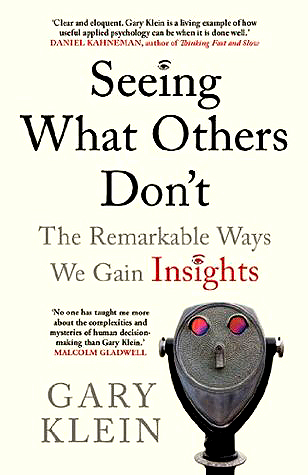
How does the quest begin? Inventor Charles Kettering suggests, “A problem well-stated is half-solved.” I de-construct all problems by investigating the “Ws and H.” Who, what, where, when, how and why questions. This helps me. Helps you?
Discoveries change the world in many big and small ways. Search for epiphanies.
_____________________________
Hock’s email is HockHochheim@ForceNecessary.com
Check out more, click here
#garyklien #epiphany #charlesketterly #combatives #martialarts #martialartstraining #kravmaga #preparedcitizen #counterbladetactics #PoliceDefensiveTactics #defensivetactics #selfprotectiontraining #selfdefensetraining
The mistake? Ignoring the successful moves. I could write a ton about this point and its unintended after-effects in hand, stick, knife, gun survival training and related, muscle memory. But, I’ll just leave this shorter essay here.
The specific point of this is about misguiding mission, misguided training doctrine. This is about the training ignorance, the naivete of people – students and instructors, not to recognize this. Failing to recognize the devastating, simulated, tactic-technique, failing to “blow the whistle” and say,
“STOP! Okay, George, you probably won that one!”
This is a doctrine problem in any system, stick fighting, knife fighting. Any one. For one example, two stick-fighting guys bash each other’s helmets in, yet the fight ends with a grounded submission hold or choke? Nope, that fight ended 80 seconds earlier. Think about that. I have seen a lot of floor tap-outs by partner A on partner B, yet B had actually won that hand, or stick, or knife fight a minute earlier, first standing or maybe on the ground, simulating doing something vital-devastating, that was-
Not recognizing this point, not rewarding this “winning move,” makes for incorrect, off-mission, survival doctrine and bad muscle memory. But listen, this is just fine for sports, arts, hobbies, exercises and fun, in which case it is NOT a terrible mistake. Know what you do and what you want. Know your mission. Stay on mission.
__________________________________________
Hock’s email is HockHochheim@ForceNecessary.com
Check out all these martial books, click here
Okay folks. Bare with me. I have a few martial ranks through the years, (like a FMA, guro BB test in Manila). So, this is a joke but not a joke. I have a joke-meme I’ve passed around for years with two loaves of cut-open bread, a “white bread-brown bread” meme.
The idea is that “Joe Jones,” white boys will hardly ever achieve respected status in FMA. (I know a RARE few are, yes, yes, but most people look to and seek, foreign sources, certainly Filipino in FMA, but often settle for any American in the states with a “Spanish sounding” name. Or at least foreign sounding name. Exotic. Same is true for the rest of the planet. Think about it. Make a list and really think about it.
“The ‘hierba’ (grass) is always greener….”
And bland, white, Joe-Jones-Gringos (like me) take a back seat. This is not new, it’s a martial arts “universal.” Who wants to learn BJJ from a white boy from Finland? NO! Brazil! Or at least have a cool Hispanic or foreign surname! I’ll fall for that!
Eventually you will have to settle for a …”Gaijin” in your neighborhood. He or she may be fantastic, just not as well known, (and will remain unknown, which is actually the whole point of this essay).
All this is just the subliminal (and overt) marketing of life and what we seek out, like Chinese food, or Italian pizza and who makes makes the best cars? Germans or Japanese? Are ex-cons the best street fighters? Do the Israelis have the best military fighting system? Is Silicon valley the best source for all things tek? Why pick the Marines over the Army? People should recognize natural and man-made…”lures.” Who has the “best” story for what? And why? What then, catches our fancy? What do we gravitate to?
In fact, when I think about it, I have felt like a white boy (and-or wrong religion) outsider in most martial arts I’ve ever down, with all the real leaders always from elsewhere, Japan, Philippines, Indo, Russia, Israel, China, the sewers of Spain (gag)…the popular systems and arts are always from elsewhere. And me? Always the…gringo. This though I expected, it’s just an observation on martial life.
Anyway, there were numerous viewers of that “bread” meme on various pages, some very smart and substantial folks, and they laughed and liked it when I half-joked that I might therefore just call myself “El Gringo,” as part of an FMA business nickname, (I still teach FMA here and there around the world along with mostly combatives.) Just a fun, name-game and partly a bit of satire on all those grand, tuhon-guro-supremo-GM master titles that keep inching up like bamboo. For 26 years now, I just tell everyone I teach to call me “Hock” and remain on an equal, friendly footing as I believe system-head-worship is confining and not good for evolution. Bad for some of my business, but good for your evolution and freedom.
Some attendees-students still insist on titling me. It’s a tradition, you know. If you must call me something? Truth is, I’m just a gringo, a white boy, outsider from Texas who knows a few tricks of the trade. Tongue in cheek? A satire on the name-game? For FMA…call me…”EL GRINGO!”
“Out of the night, when the full moon is bright, comes the stickman known as Gringo. This bold renegade carves a “G” with his blade, a “G” that stands for Gringo.”
(Sung to the Zorro TV theme with apologies thereto. I realize the great young, unwashed has never heard the Zorro theme song. Never saw the old show. Too bad. Then feast! Feast on this video! https://www.youtube.com/watch?v=lQnle_3KuOE
________________________________________
Hock’s email is HockHochheim@ForceNecessary.com
Check out the PAC-Filipino page, click here
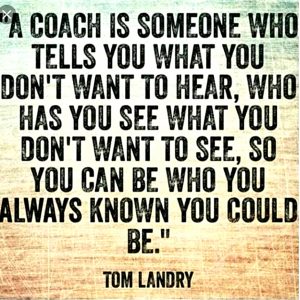
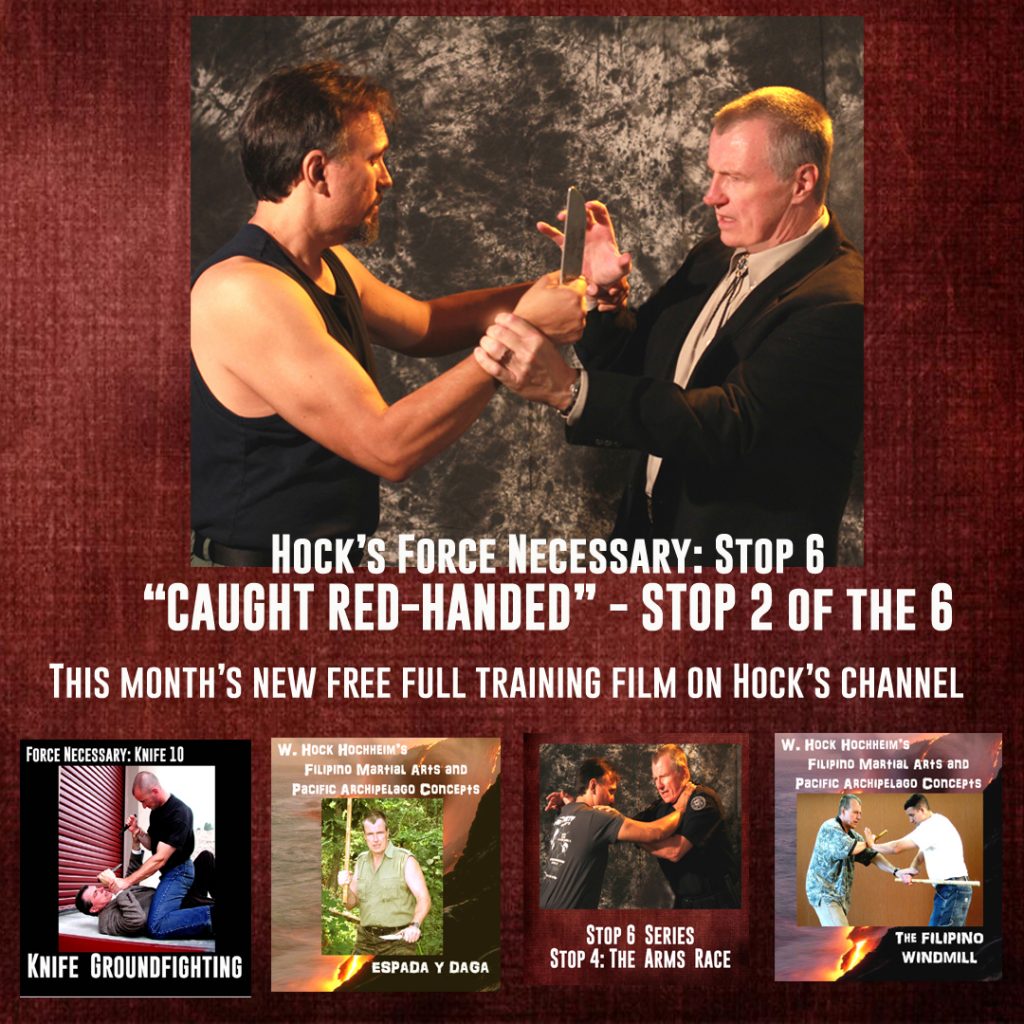
For starters, I am not a knife or gun collector, no more than I would collect hammers, screwdrivers or wrenches. I just don’t care. You get the message. The “tool” message. I guess it comes from my Army and policing time and experiences. I am interested in efficiency. Don’t misunderstand me, I like looking at cool knives and guns, I admire them, I just don’t want them or need them. If you do collect and you have the money and time for such a hobby, then if you are happy? I am happy. The only time that my eyebrows raise is when the lines between pretty and necessary-survival are blurred (and maybe bloody). One problem often blurred is the texture of grips and handles.
Speaking of bloody, Johnny Cash once wrote about the “kicking and the gouging and the mud and blood and the beer.” There’s also guts, water, oils, sweat, bad gloves and other substances that can make life very slippery and your hands and tools very slippery. Legend has it that the Gurkhas would dip their kukris in motor oil and then train with slimy grips. And what if your hands are injured and-or are freezing? I always shake my head when I see slick, metal knife handles and gun handles.
It’s bad enough when people have stupid hand-finger positioning on grips.
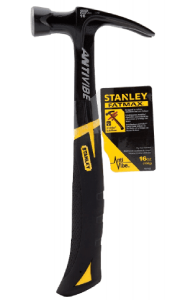
“I want my weapons to be tools and my tools to be weapons,” – Paul Howe
I am not endorsing anyone or anything here. I am just making a suggestion, forego pretty and slick, and get the most textured grips on your firearms, knives and sticks-batons. In my Force Necessary: Stick course Level 1, Force Necessary: Knife course Level 1, Force Necessary: Gun course Level 1, I emphasize and display the vital importance of grip-handle textures. (The issue of the SIZE of handles and grips is a whole other important essay.)
Get a damn handle on your handles!
“““`
Hock’s email is HockHochheim@ForceNecessary.com
#weapongrips #combatives #martialarts #martialartstraining #kravmaga #preparedcitizen #counterbladetactics #PoliceDefensiveTactics #defensivetactics #selfprotectiontraining #selfdefensetraining #trainforthefight #selfdefense #selfprotection #urbancombatives #kembativzbrand #kembatives #guntraining #knifetraining #unarmed #stickfighting #forceonforce #forceonforcetraining #forcenecessary #forcenecessaryuk #whockhochheim #handtohandcombat
Your Signature Moves and the Pareto and the Mental Model?
Mental models are descriptions of reality that apply across every area of our life, usually don’t get outdated, and provide good results by helping you make better decisions. What is an example of a mental model? One of the most famous and valuable mental models is called the Pareto Principle. Use the 80-20 Pareto Rule to create your signature moves
You probably know it as the “80-20 rule.” This mental models says that most of your results are going to come from just a small percentage of your effort or work.
Vilfredo Pareto, the man who “discovered” this principle noticed that 80% of the land in his area was owned by 20% of the people. He looked in his garden, and saw that 80% of the peas were in 20% of the pea pods. Then he realized that this was something like an organizing principle of life.
This phenomena applies across many domains including productivity, happiness, business, health, etc. Here are a few examples:
You know me, the eternal skeptic, and maybe the percentage might be 18% or 25%? But I do get the overall idea. This model is much more complex and it can be applied to infinitely more, but this basic concept allows you to quickly acquire what counts. In our “fighting world,” just look at the UFC and see what is actually and consistently done, juxtaposed with the total martial arts systems, techniques and methods of the world and history. Who, what, where, when, how and why?
In the “fight world” competition fighters have a small collection of go-to signature moves (and strategies). Opponents study those moves by way of films, personal observations and interviews to win. But what of war and crime? You might say that militaries have overall, signature strategies. But what of defending yourself against criminals? Criminals and the classic bullies have no films to study on you, to prepare for your signature moves.
I am not talking about hobby sports and arts here. Just survival. I would venture to say that you need some personal signature moves that best suit you, compiled after you do an extensive study in the “who, what, where, when, how and why” questions. This is why the cookie cutter, martial arts systems are not the best manufacturers of the survival, self defense product, and they can be very one-dimensional. Thai fight Thai. Boxers box. Wrestlers wrestle with no strikes. Etc. One dimensional, offering abstract skills to deal with the harsh, mixed-weapon chaos of the world. (I might add that I do not like the words “self defense” and “fight” or “fighting,” as they can be misleading and hackneyed when discussing survival. Still, I must use them for the lack of more succinct nouns.)
I resolved this signature concept by insisting that people study to develop their signature moves for their size, shape, strength, age, coordination and predicable situations-and then later, non-predicable situations. It’s the biggest part of the “Who” question.
Some instructors will say “get 5 things.” “Come to my ‘5 Things’ school.” But then they one-dimensionally speak of only unarmed things. What of stick things, knife things, gun things? Five, then 5, and 5 and 5 more? What of standing through ground problems? That’s a matrix of mixed things! That’s a whole lot of simple things. I struggle with this numbers games by seeking the drill/exercises that are multi-purpose. Learn one movement, change the position and weapons. I must be ever vigilant in finding these short cuts for you. That’s my job. My mission.
In the end your signatures are also facing perishability. Will you do these things, say…for the rest of your life? Or, will these signature things slowly erode away. Perishability is another topic for another time, but will your signature become dim and unreadable. And in this vein, let me mention quickly that you need to review your signature moves every 5 or 6 years or so because as you age, you may not be able to execute them as well, or at all.
We fight criminals, enemy soldiers and our “drunk uncles.” I could go on with a lot of anecdotal stories, lessons and name-dropping here, but I think you get the point? Please take a deep dive in the “who, what, where, when, how and why” questions. Exercise and experiment with unarmed and mixed weapons. Collect things for you, yourself. Improve your “Martial IQ” and your “Martial Savvy” with skepticism and awareness. Don’t get yourself, “Martial Sick.”
This is all about YOU. Not me. Not the perpetual-ization and worship of systems and their god-heads. YOU! Get some signature moves for situations.
Sign your name on these dotted lines…
______________________________________
Read more on Pareto 80-20 and life in general
Hock’s email is HockHochheim@ForceNecessary.com
#combatives #martialarts #martialartstraining #kravmaga #preparedcitizen #counterbladetactics #PoliceDefensiveTactics #defensivetactics #selfprotectiontraining #selfdefensetraining #trainforthefight #selfdefense #selfprotection #urbancombatives #kembativzbrand #kembatives #guntraining #knifetraining #unarmed #stickfighting #forceonforce #forceonforcetraining #forcenecessary #forcenecessaryuk #whockhochheim #handtohandcombat
“This guy must hate me!”
I tell a story in my police books about a guy’s mean facial expression that was a lesson in life for me. In the 1970’s on patrol, I did the expected “50-10” thing when I could. Fifty minutes of driving and ten minutes of parking and watching. It was smart to park at busy places. I worked a lot in our city’s “projects” not just in the patrol division, but many years later as a detective too. In the 70s, I frequently began to see this same black guy pass by, whether I was parked or slowly driving around. As he came into view each time, he looked at me with a great disgust, a very angry face. “Wow! This guy must hate me, or really hate cops. Man!” This hateful glare went on for some time when the fates would have us pass each other.
Finally I said to myself, “The next time I see this guy I am going to smile and wave at him and see what he will do.” About two days later I saw him while I was parked on a street. As he got closer, we looked at each other and I smiled and waved at him. His angry face lit up, he smiled big and waved back. We were still a distance apart and after he did that, I had the time and space to see his face immediately return to one of anger. But then I realized, he wasn’t angry at all. That face – was just his regular, walk-around face! Sadly, it was a mean one. He was the angry man that wasn’t angry. As the weeks and months passed this happened time and time again. We never met. We never spoke. We just smiled and waved. And I thought about how many people are mislead by faces and expressions.
One of my tenets in self defense course is “The face is a mask, he could fight scarier than he looks and look scarier than he fights.” And the self defense, martial arts, security and enforcement business is rife though the years with all sorts of predictors about pre-assault and pre-crimes. (I might add here that pre-crime tips are usually ignored, as martial experts opt to talk about pre-assault tips.) Regular folks on up to professional investigators also want to catch lies and liars. Everyone wants the tip-off secrets, the bible of alarms and alerts from this or that body language master, poker player, psychologist, Navy SEAL or friendly neighborhood, karate guy. In this wanton process is the “Rise of the Micro Expressions.” (Key the exciting music here.)
Dr. Google reports – “A microexpression is a facial expression that only lasts for a short moment. It is the innate result of a voluntary and an involuntary emotional response occurring simultaneously and conflicting with one another, and occurs when the amygdala (the emotion center of the brain.) responds appropriately to the stimuli that the individual experiences and the individual wishes to conceal this specific emotion. This results in the individual very briefly displaying their true emotions followed by a false emotional reaction.[1] Microexpressions express the seven universal emotions: disgust, anger, fear, sadness, happiness, contempt, and surprise. (As you can see, “micro expressions” officially became all one word at some point in my lucky, long life.)
I am certainly not going to dismiss body language or micro expressions. No. I am alive today because of various visual tip-offs within situations. But, being the eternal skeptic, I would like to instead, bring up some warnings and things to think about. I am here to say that while they sell you them for a $1 a piece, the tip might only be worth 75 cents? 80 cents?
Dr. Gad Saad is a respected evolutionary biologist and his new book “The Parasitic Mind” is a must-read. One of the many book’s subjects is victimology with interesting relationship to the infamous Munchausen syndrome. (Stay with me “internet clickers!”) As to reading faces, he recalls on page 103 a piece of research where people were presented a batch of facial photographs and asked them to pick out the “threatening expressions/faces.” Scary faces were picked. Then with new people, the scary faces were slowly removed until the batch consisted of only the neutral faces, previously ignored as non-aggressive and non-threatening. Without any scary faces to pick, the subjects began to pick a number of the neutral faces/expressions as threatening. Pre-conceptions. Looking for trouble. Finding the unfindable. Reading the unreadable. Interesting. Seeing hate where there is no hate.
There is also much ado about the detection of lying in this subject matter. The real frontrunner of this lie-with-microexpressions subject, Dr. Paul Ekman admits on his webpage – “There is no single, definitive sign of deceit itself; no muscle twitch, facial expression, or gesture proves that a person is lying with absolute certainty. Therefore, most modern-day methods of deception detection heavily rely on a variety of methods to collect, analyze and interpret emotional and physiological data. However, any data collected merely expose emotional clues that may or may not be related to deception. For example, sweaty palms during a job interview could indicate an interviewee’s fear of being caught in a lie about their qualifications. Or, sweaty palms could be illustrating their fear that the interviewer won’t believe their qualifications despite being totally honest on their resume. Or, their palms could be sweaty because they’re worried about something else entirely, like a sick child at home.”
President Reagan was famous for “Trust, but verify.” Unless the speaker already has a terrible record, perhaps. And we fall back to the totality of circumstances again. Situational study. An “investigator,” professional or not, must investigate. We must be very careful in some encounters not to jump to conclusions over a flinch or a twitch, etc. A terrible trait of some detectives I had to work with and around, is “conclusion jumping.” I’ll even go you one worse – some were also stubborn. They jumped to conclusions and then they were too stubborn to face the building, contrary facts. This is double-terrible in any criminal justice system.
I am often amused by people watching the news who claim that this or that suspect or witness is…lying. “You can tell!” they say. Yet these same people are enraptured by actors in convincing roles on TV and in the movies. Folks…they…are…ACTORS! The claimers watch a mystery and predict who the killer is and who is innocents are. Remember the killer and the innocent suspect are people ACTING, who are neither killers nor innocents in real life. They are fooling you.
And, even untrained people can act in, out and around microexpressions. Actors also conceal pending violence (like conmen ambushers) and know how to hide anger and intent or pretend anger to intimidate you into submission.
By the way, all this scares the hell out of me when considering jury trials, as jurors look at the faces, demeanor and clothes of lawyers, judges, defendants and witnesses.
————
Learn more here:
————
Hock’s email is HockHochheim@ForceNecessary.com
Get Hock’s 2-book, true crime-detective, police omnibus, from Wolfpack Publishing, the ebook on an amazing sale at Amazon, with their exciting title. Click here